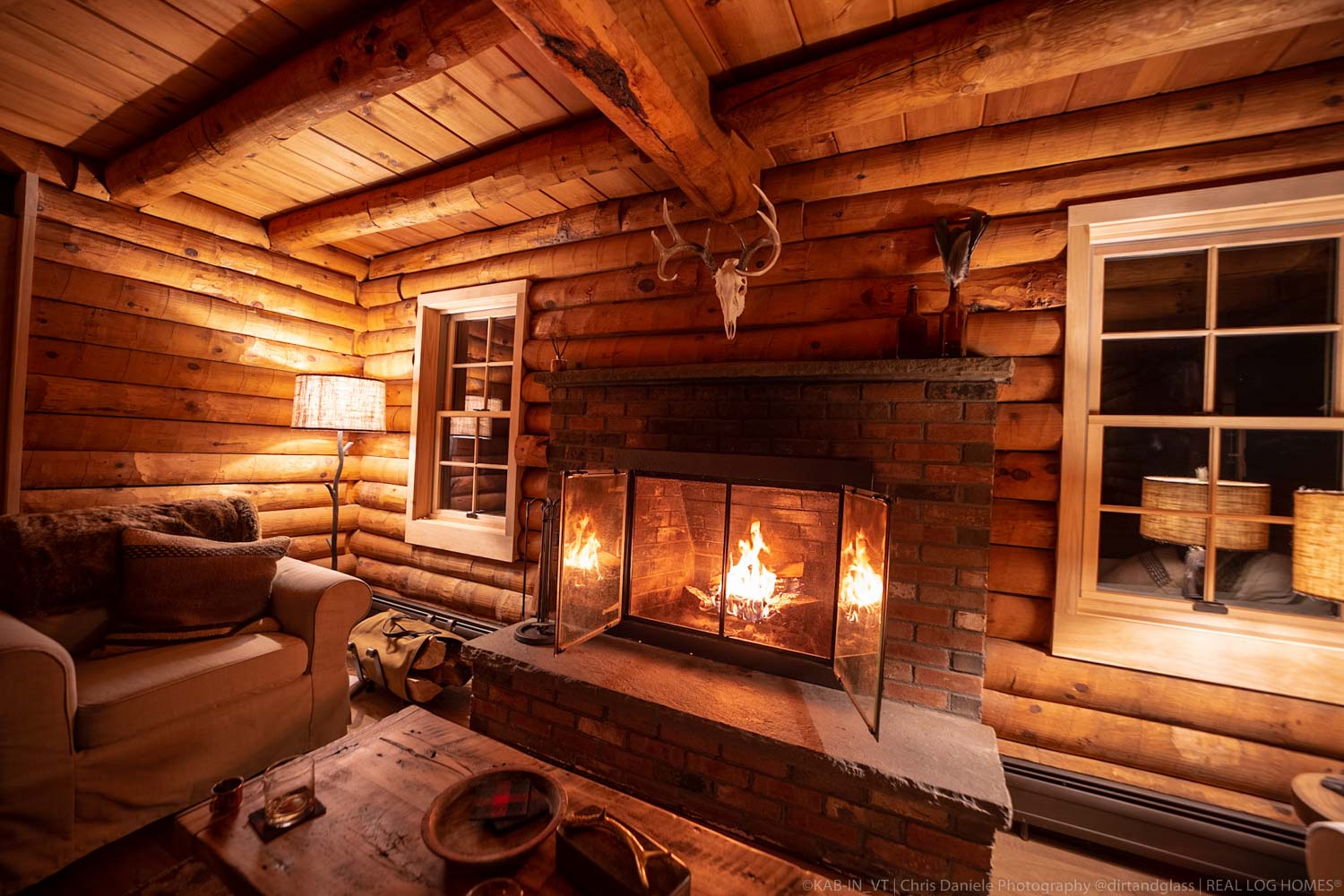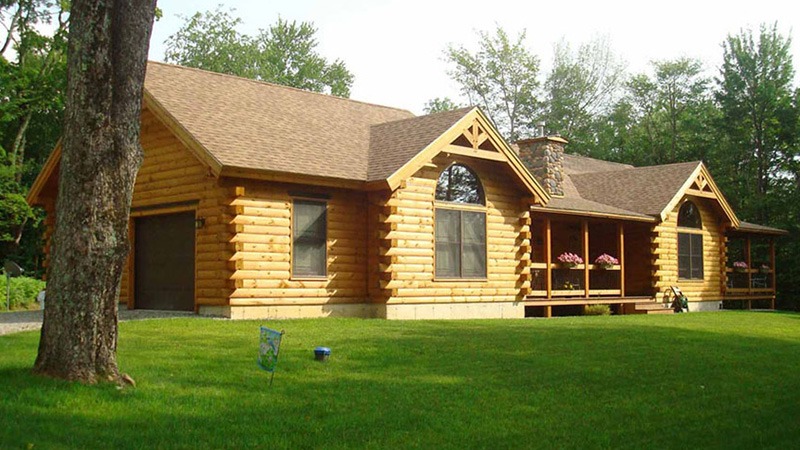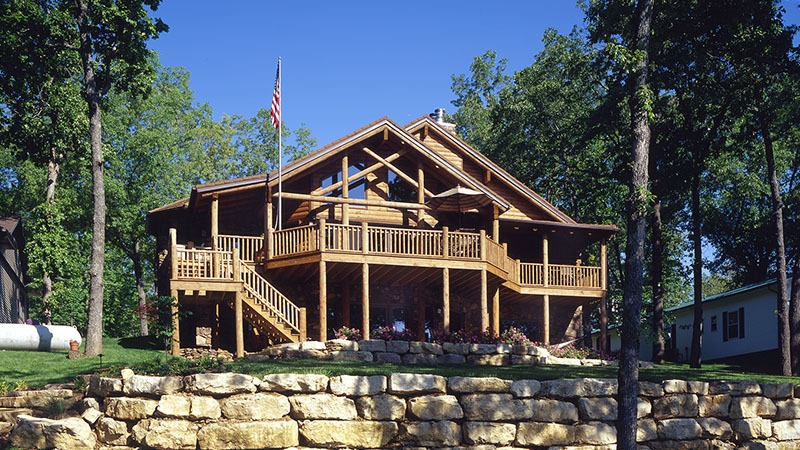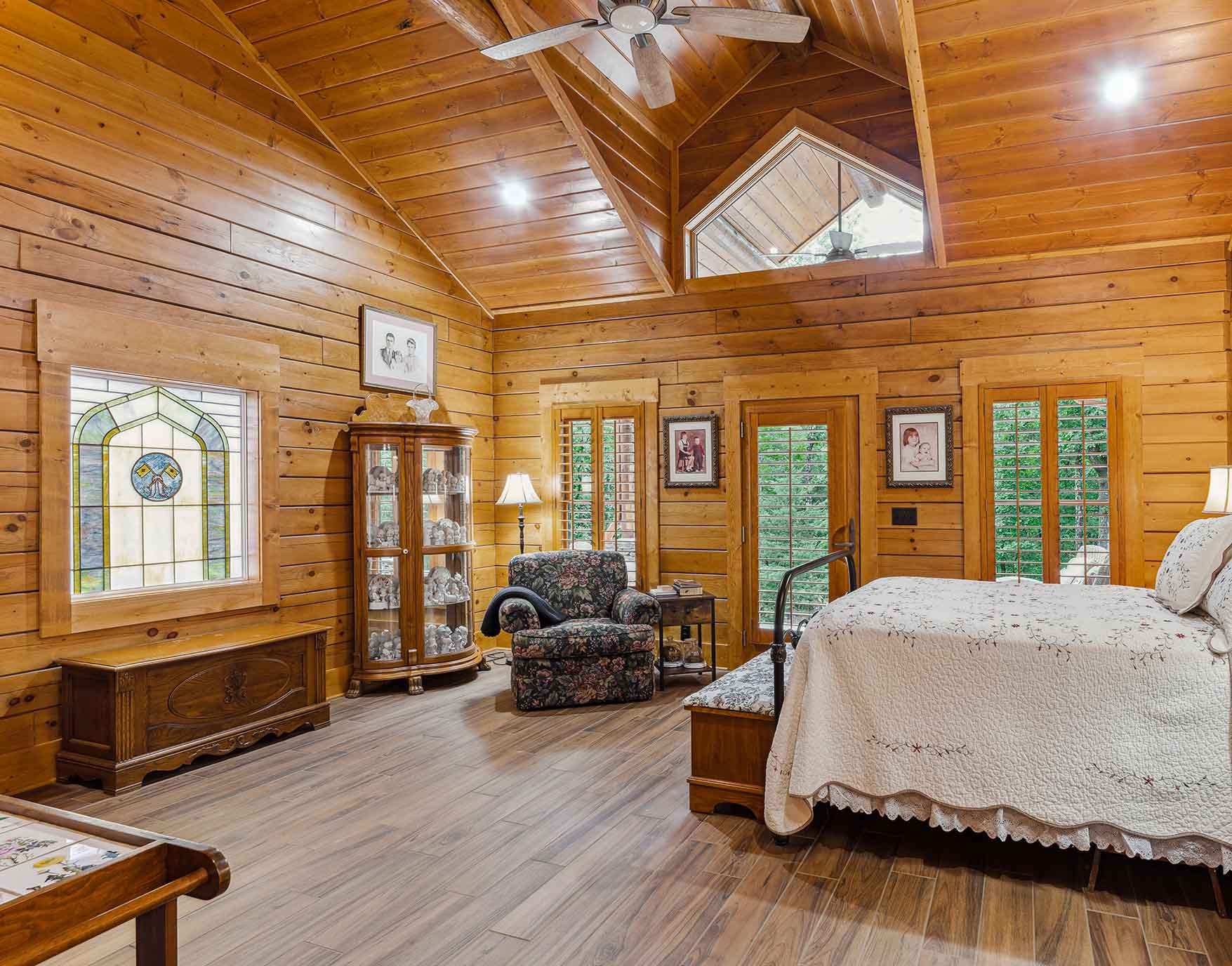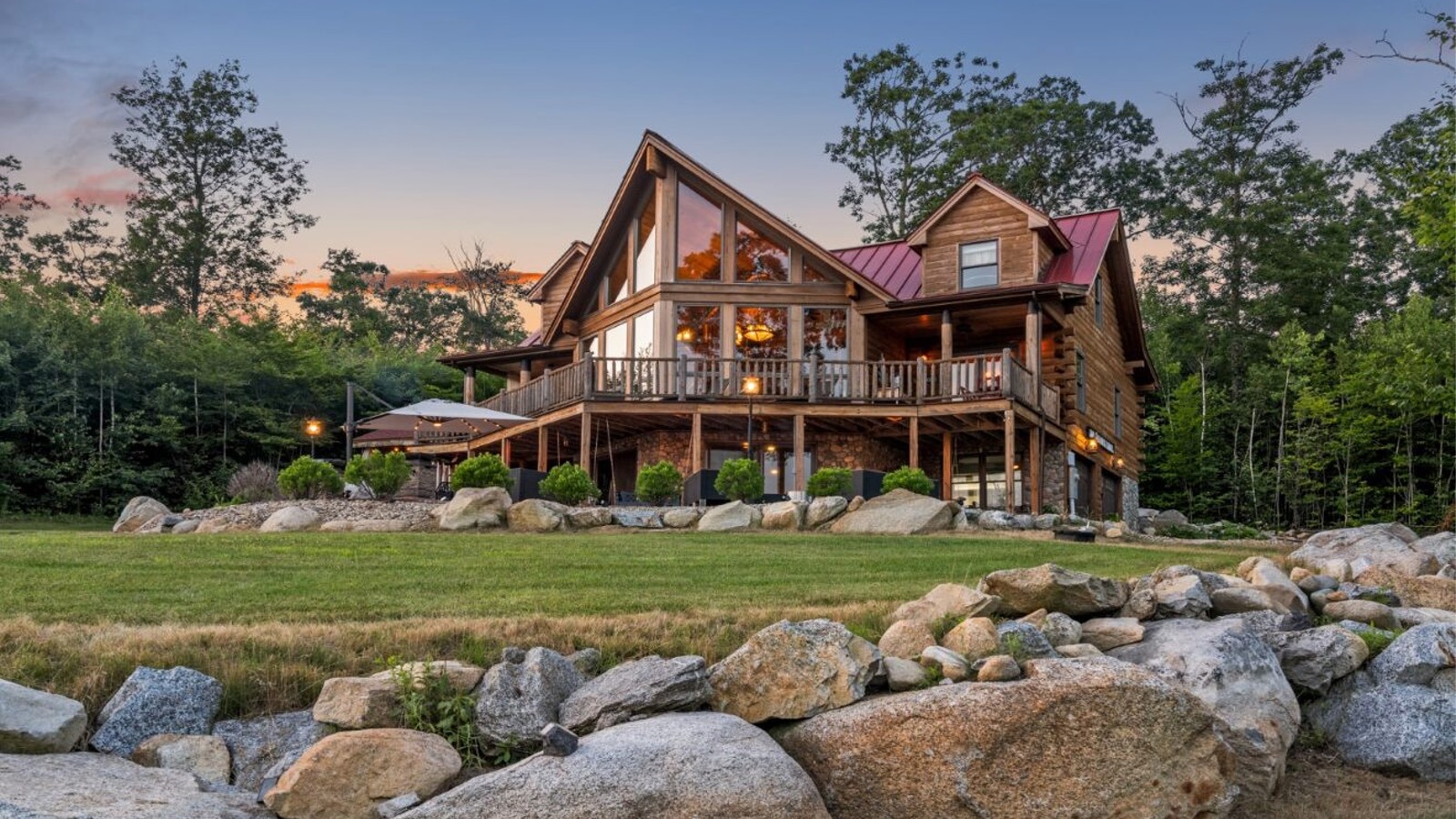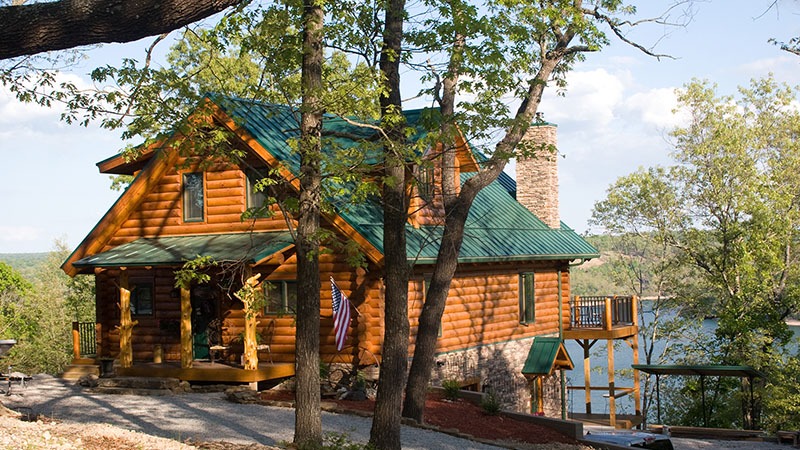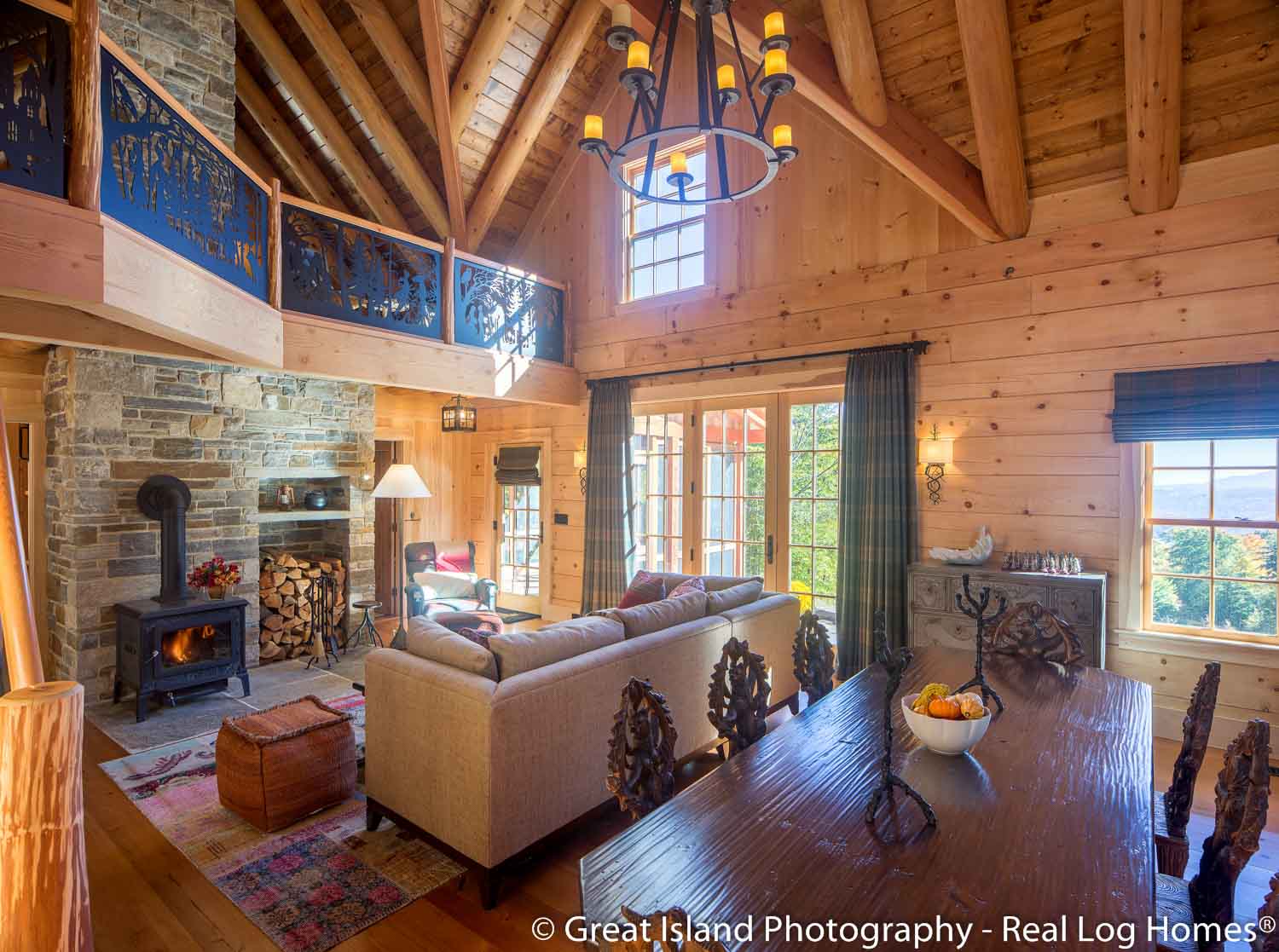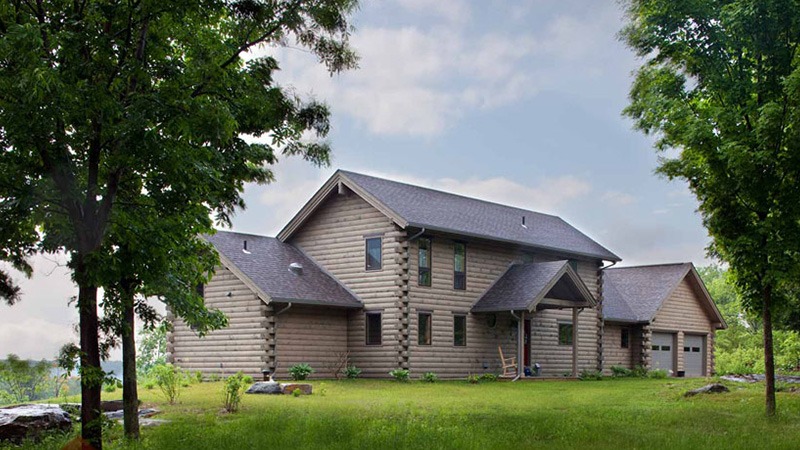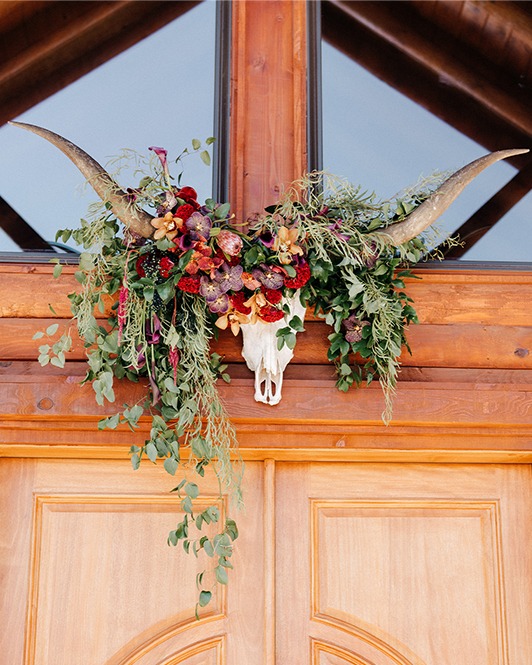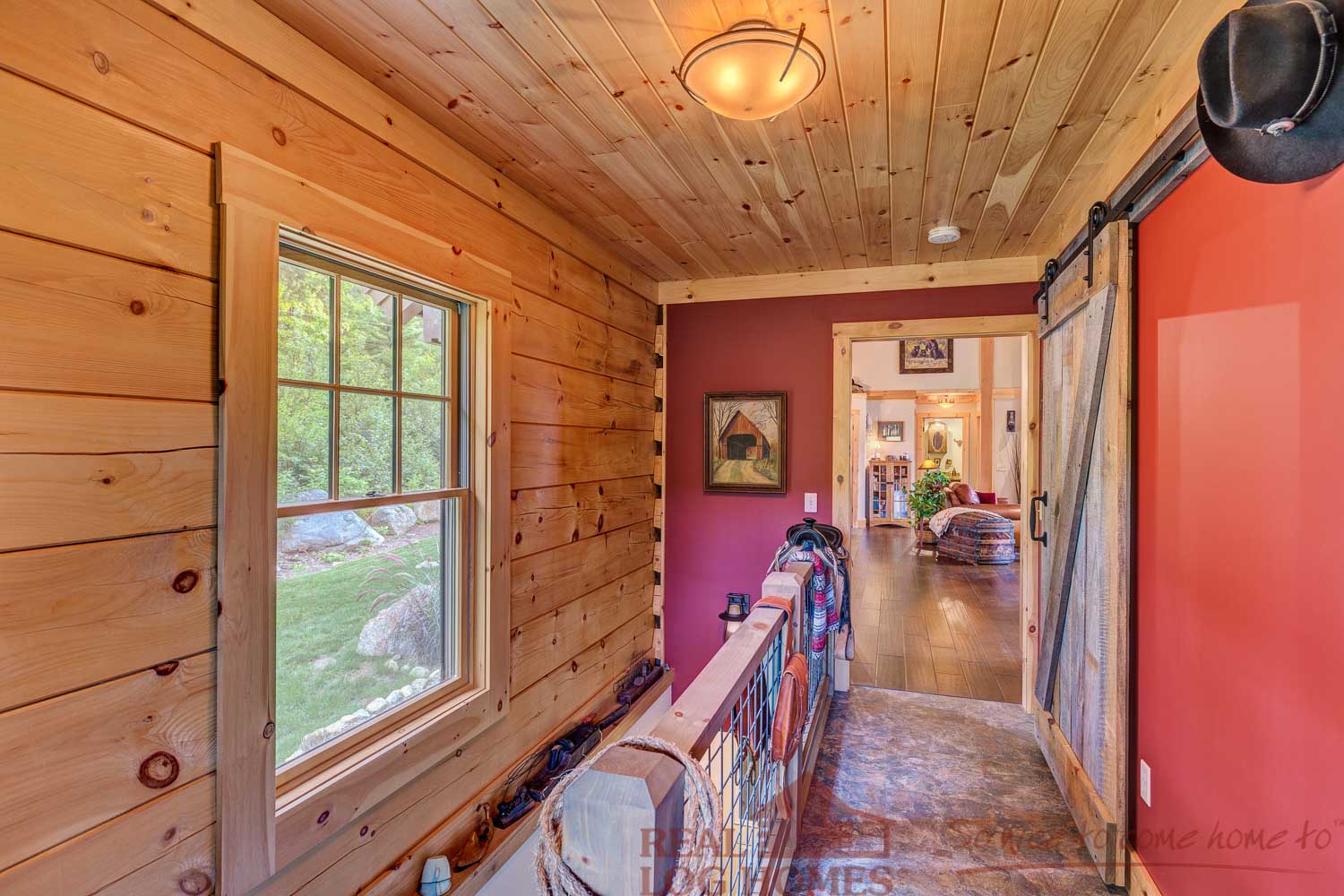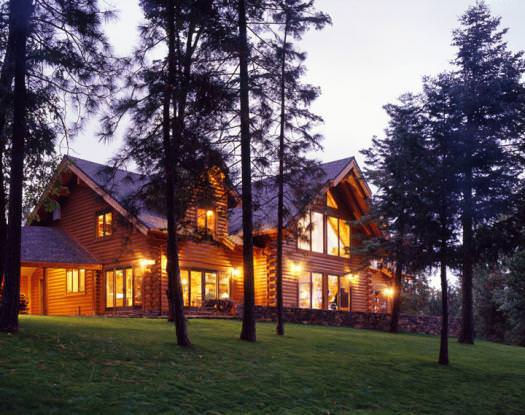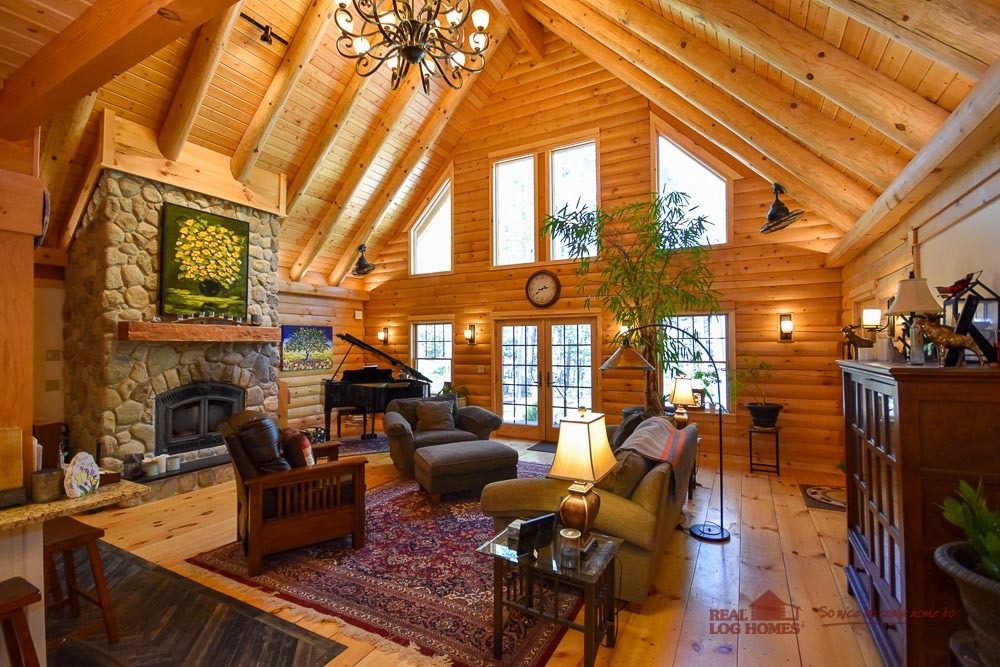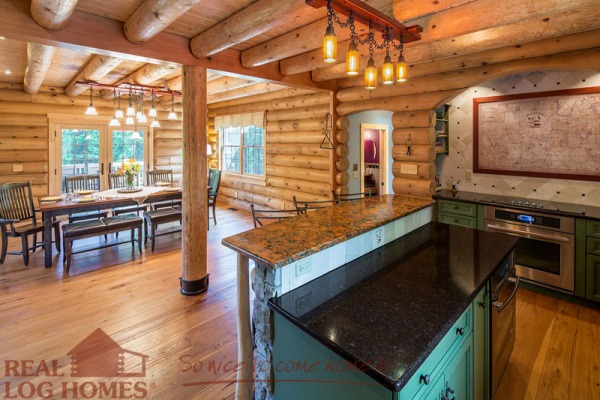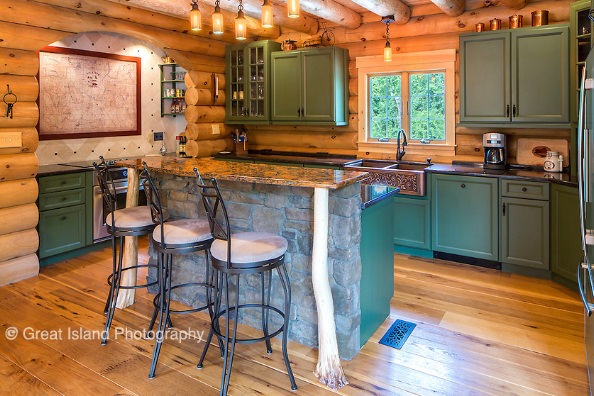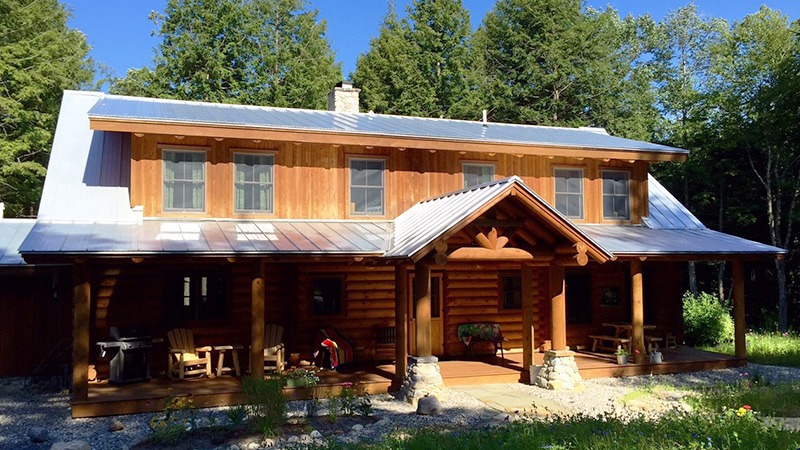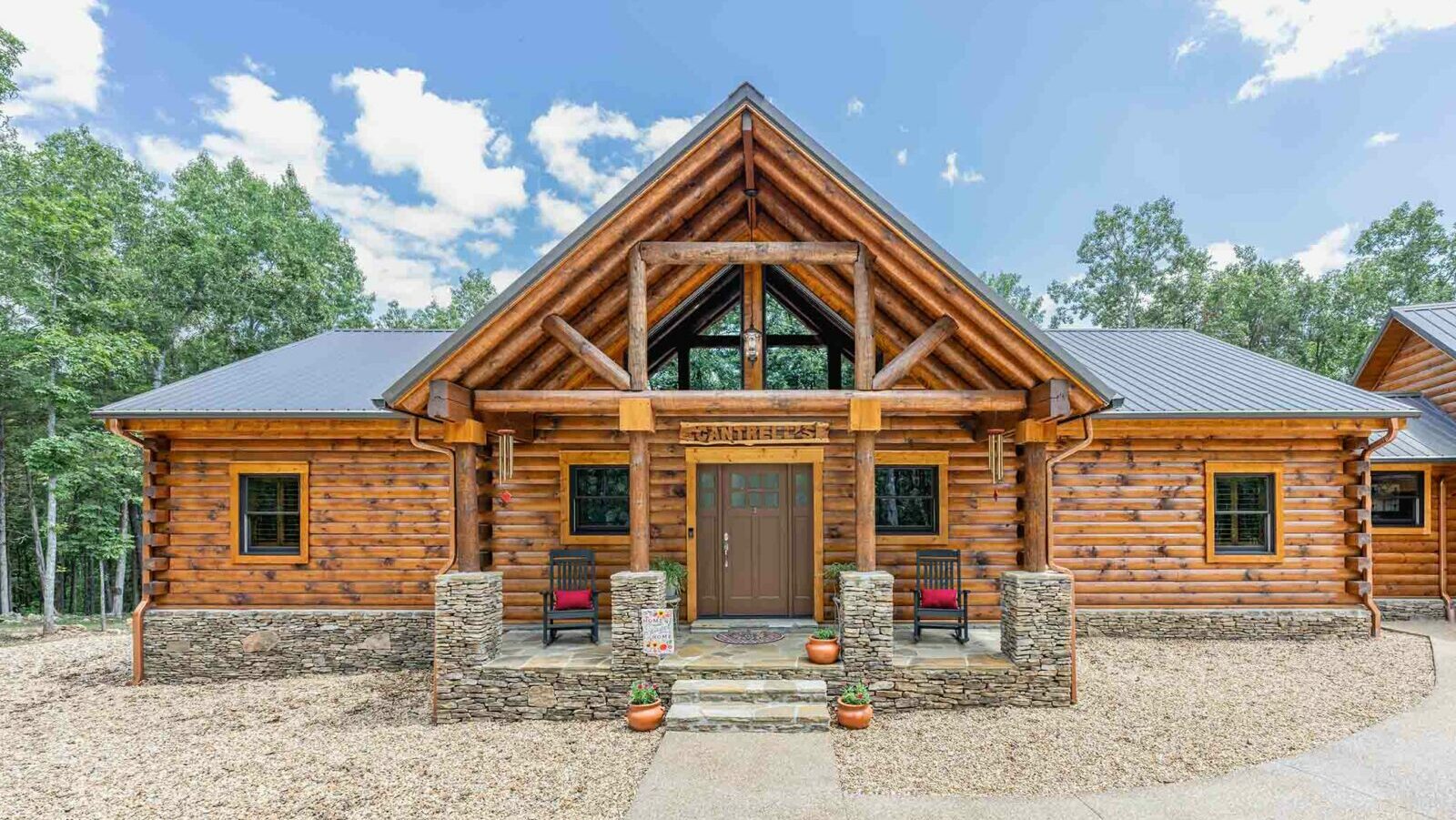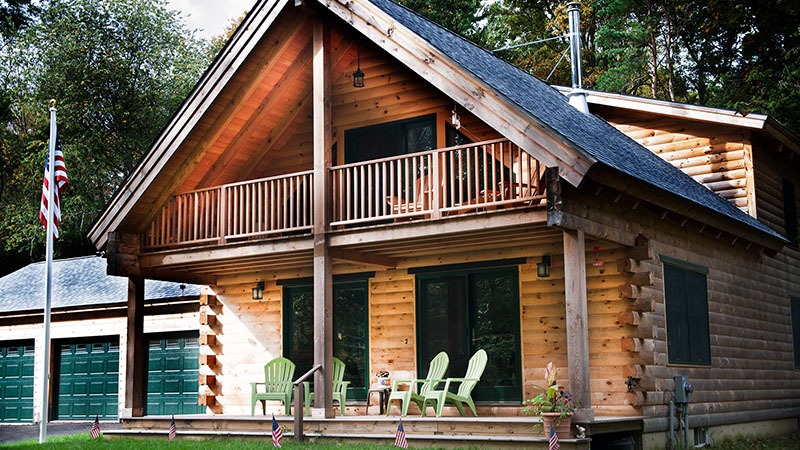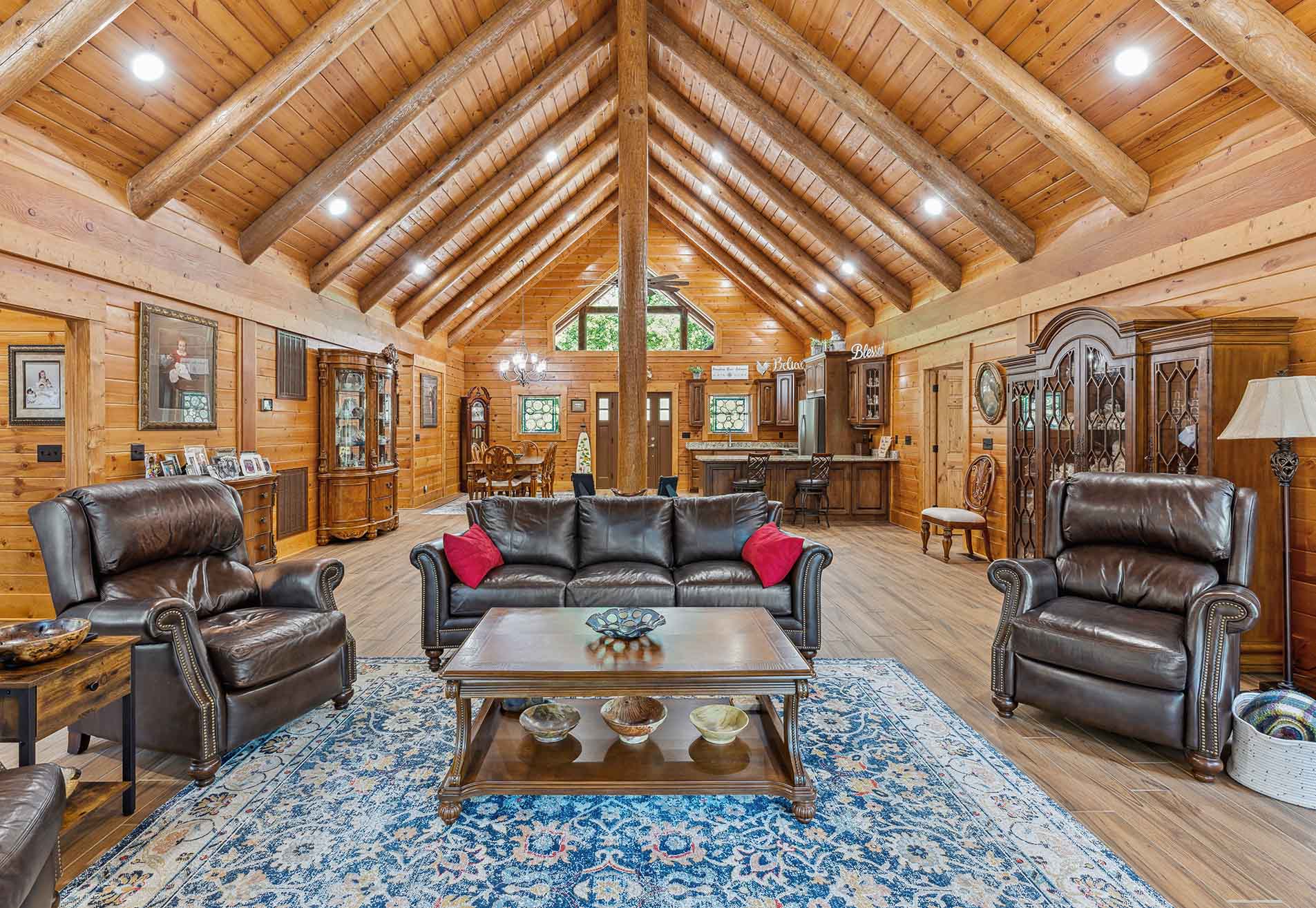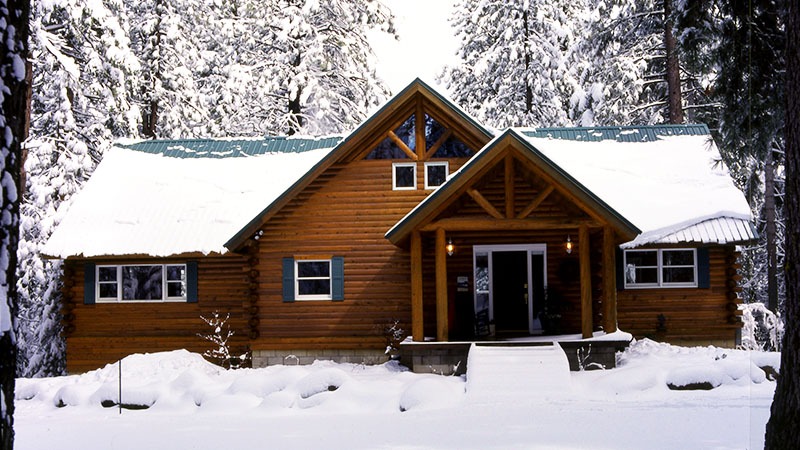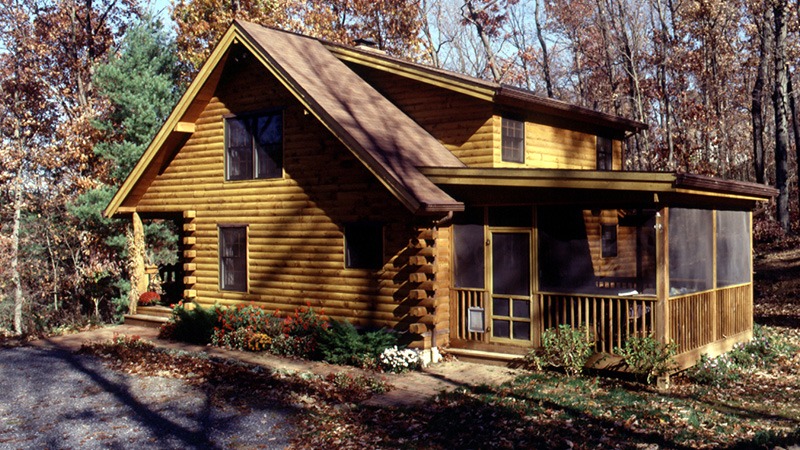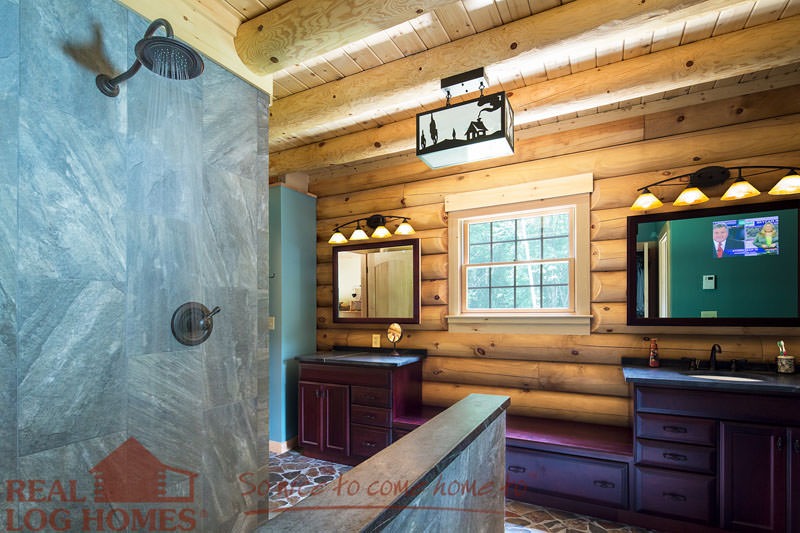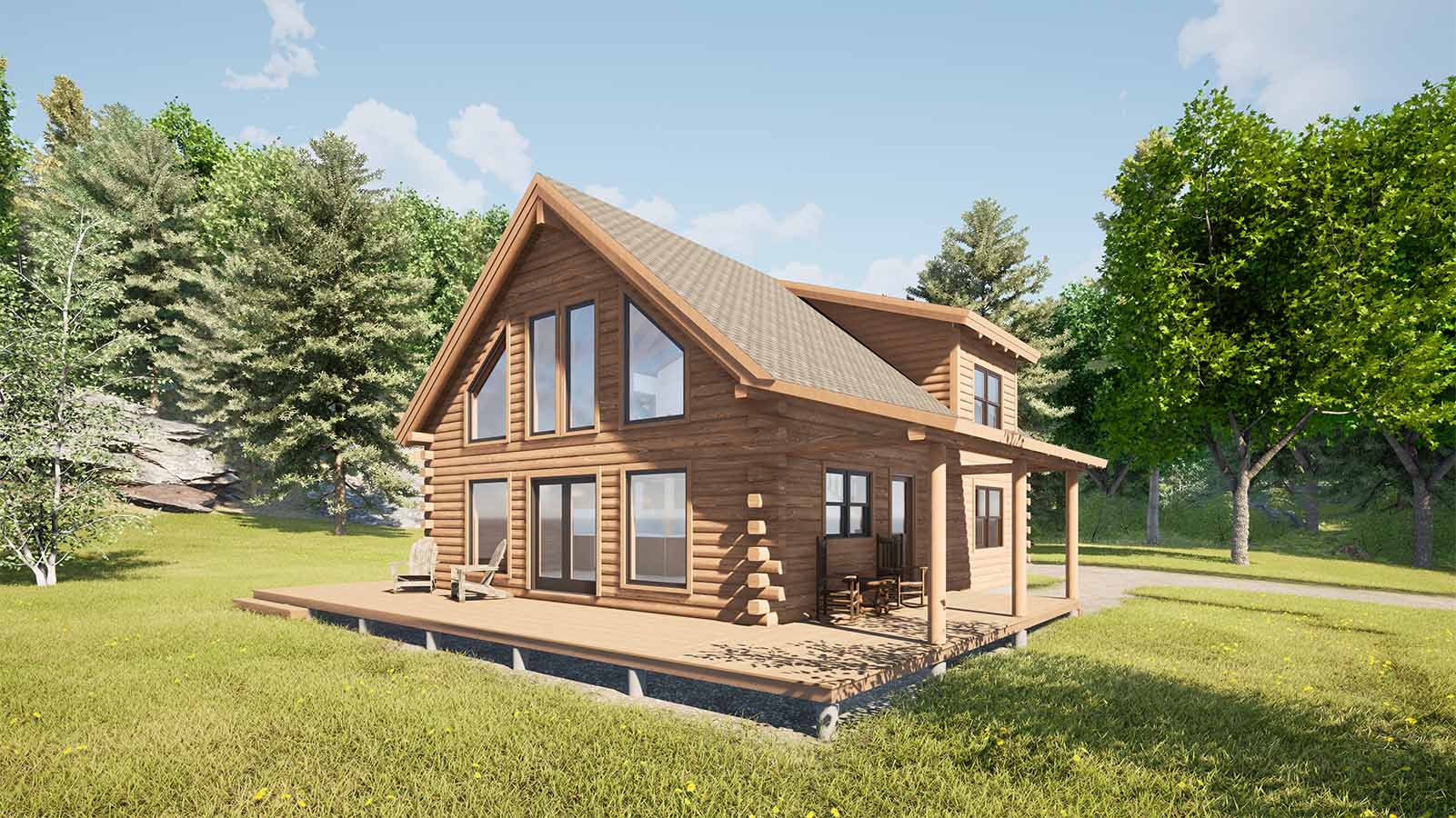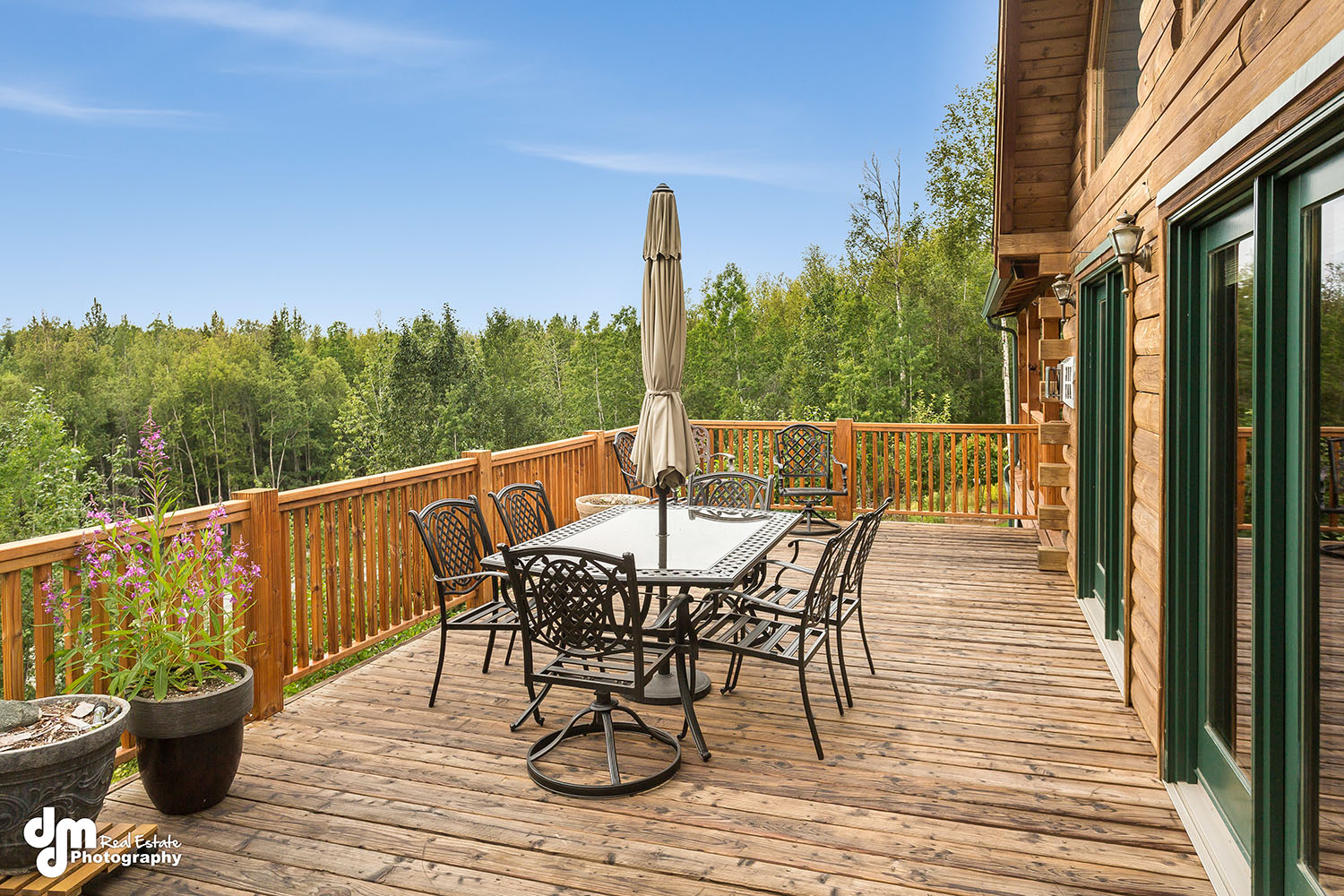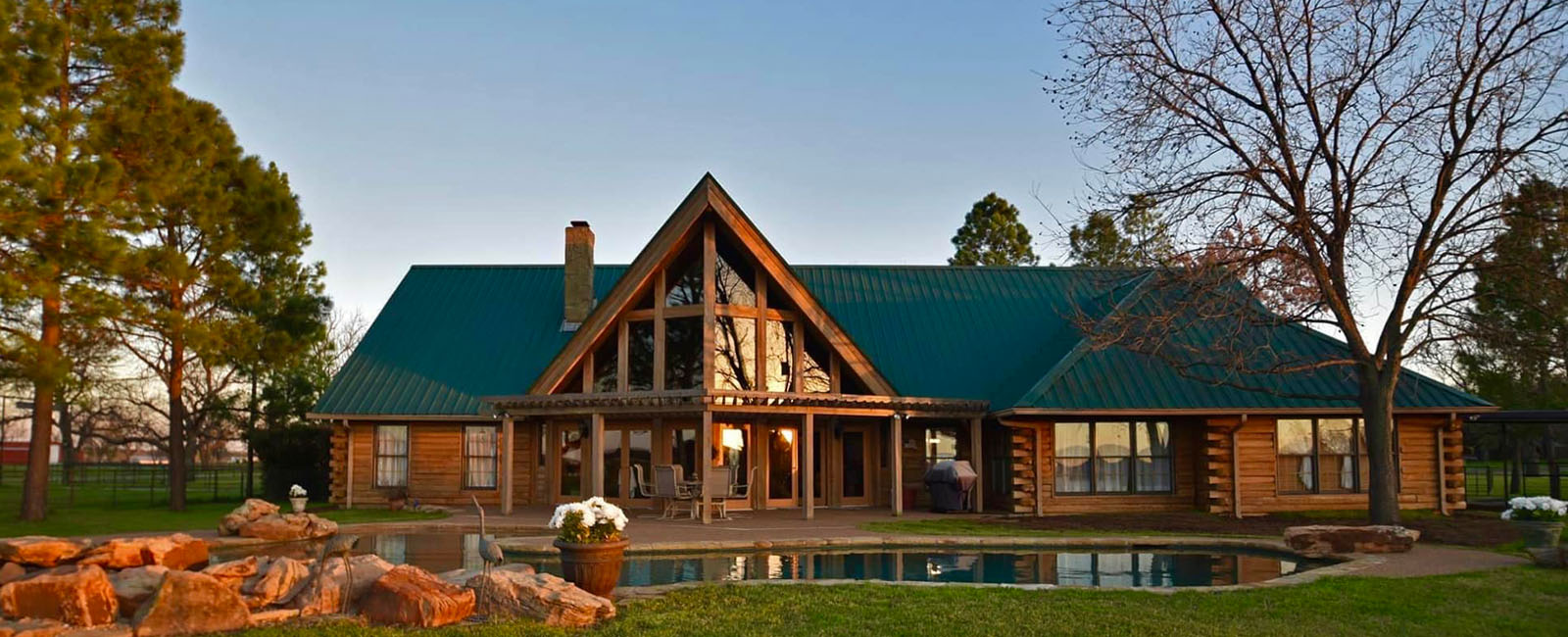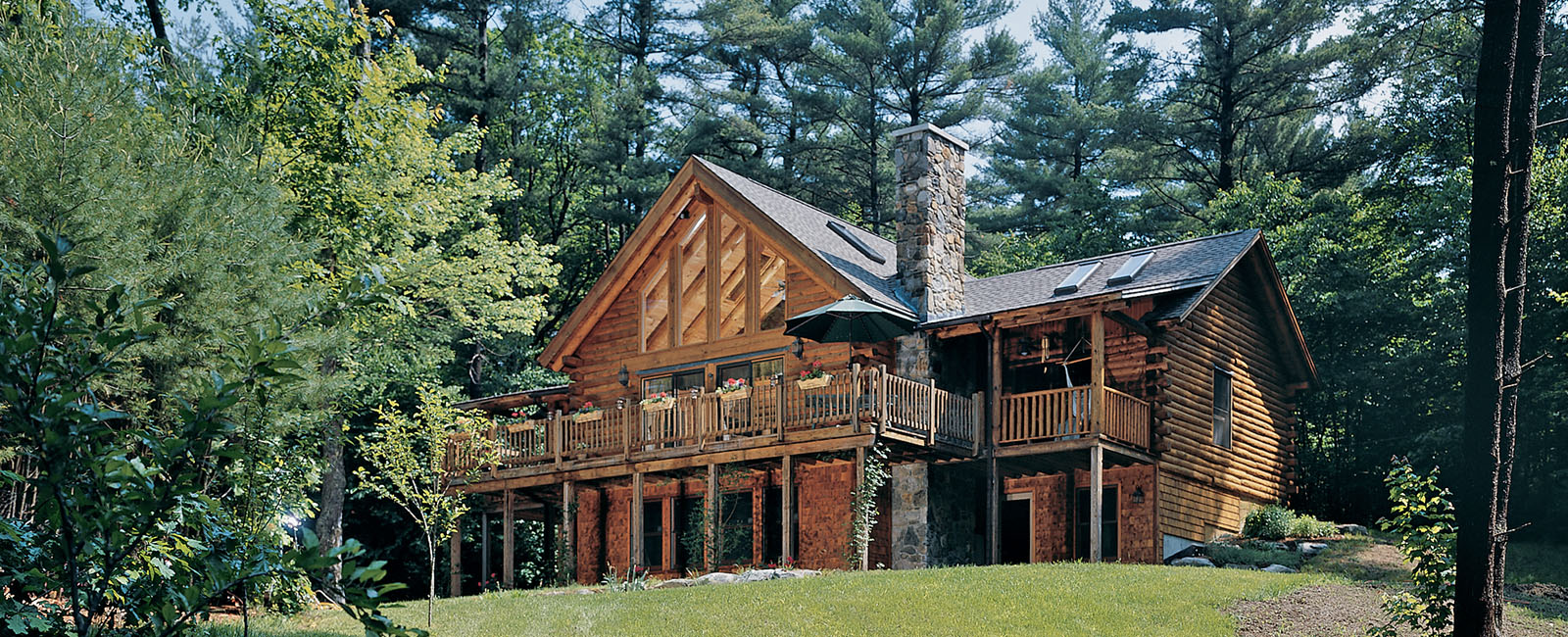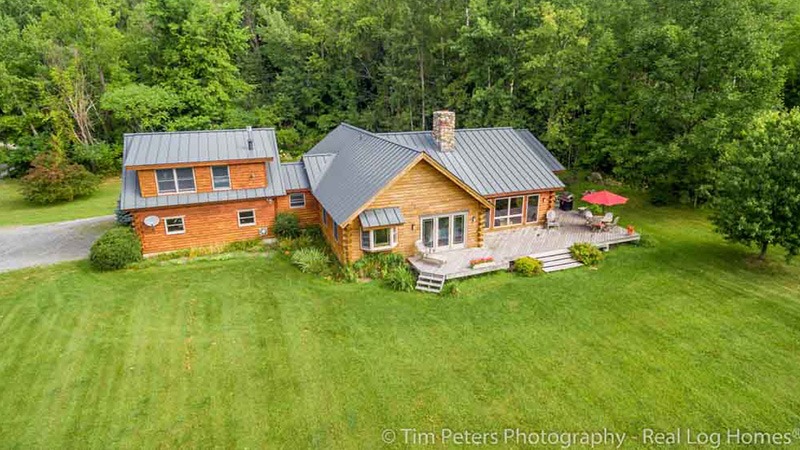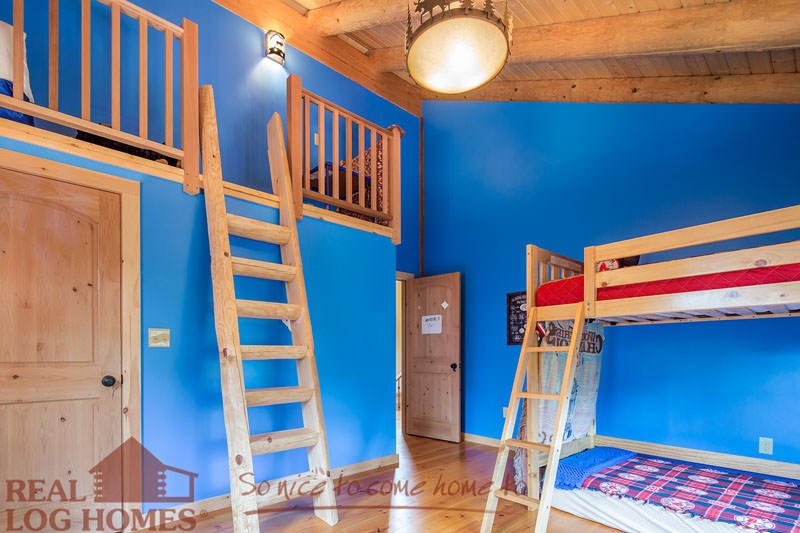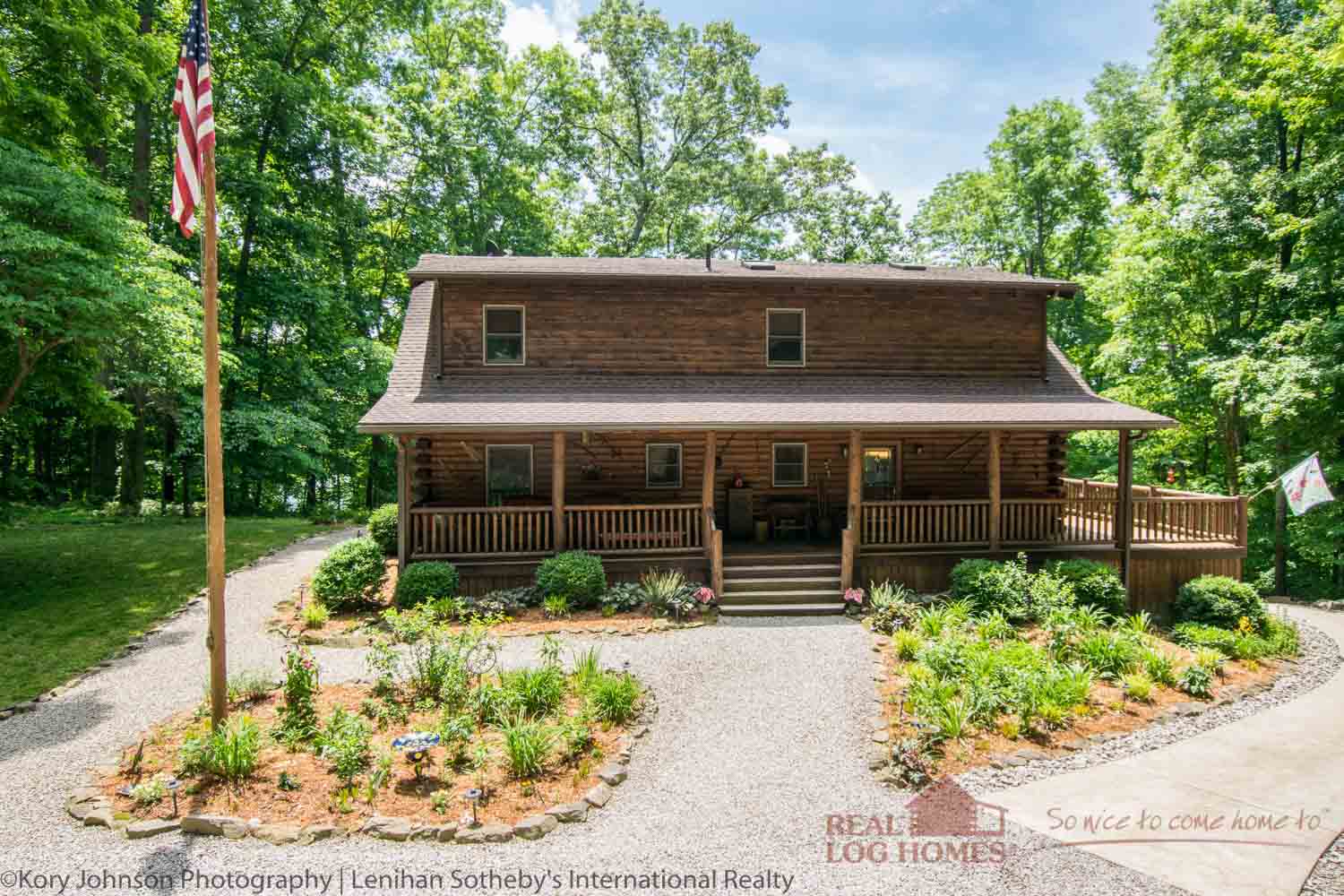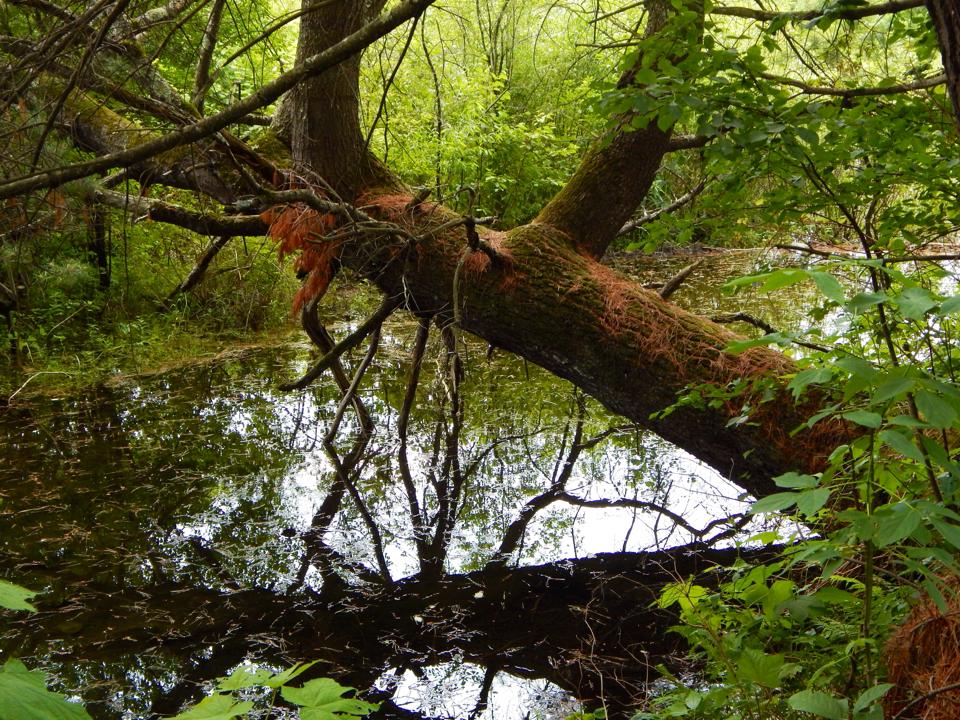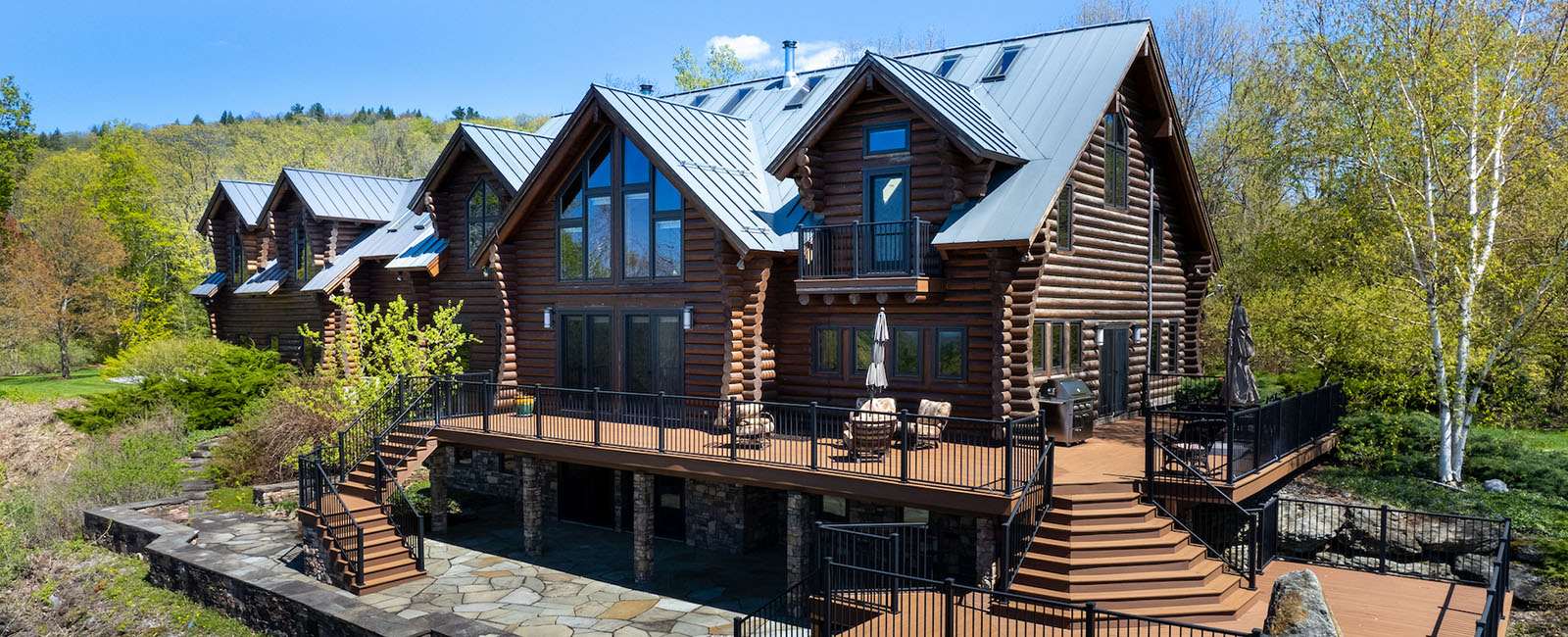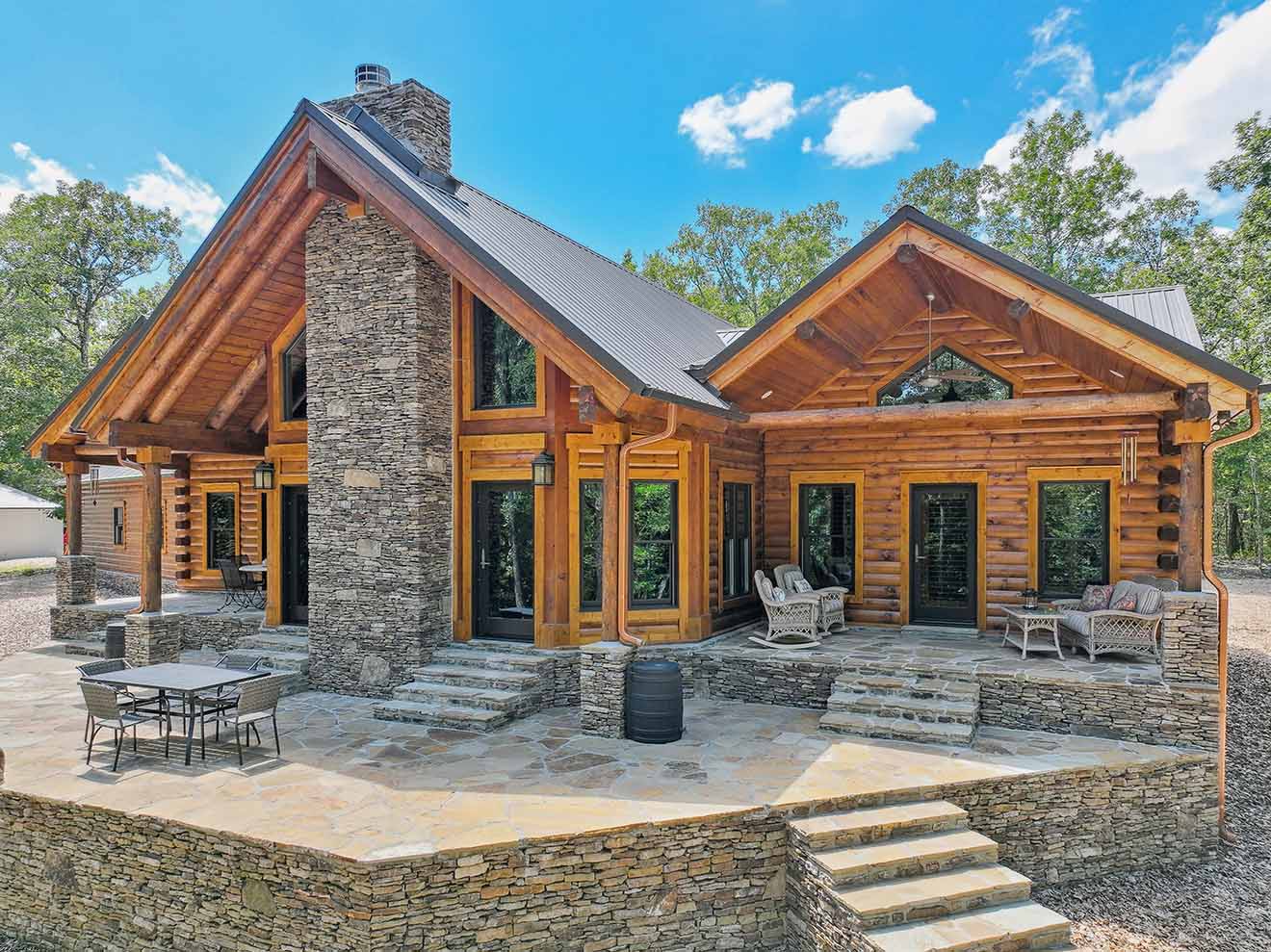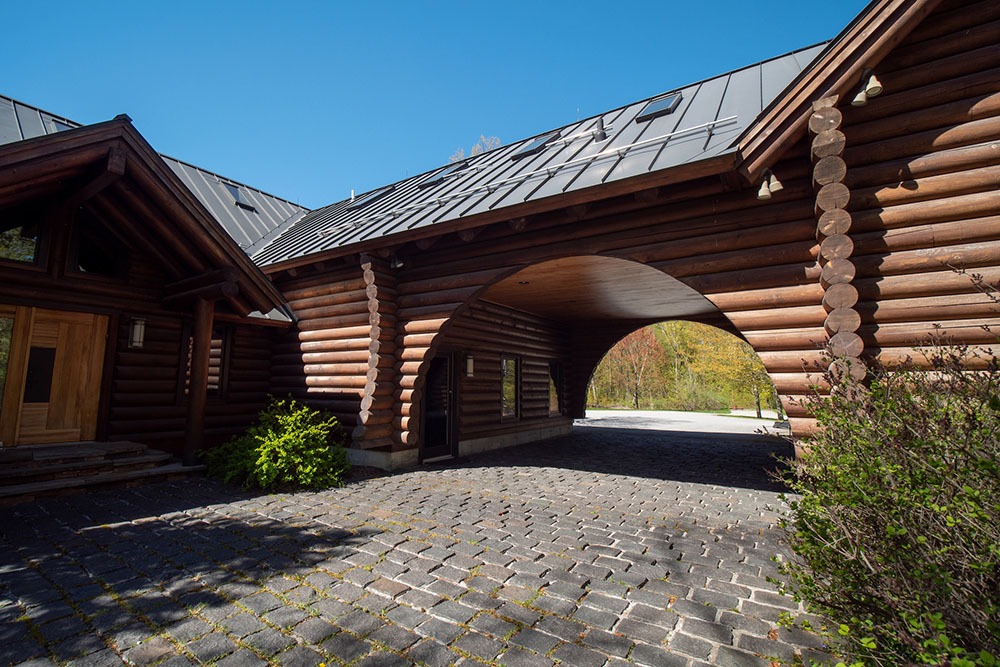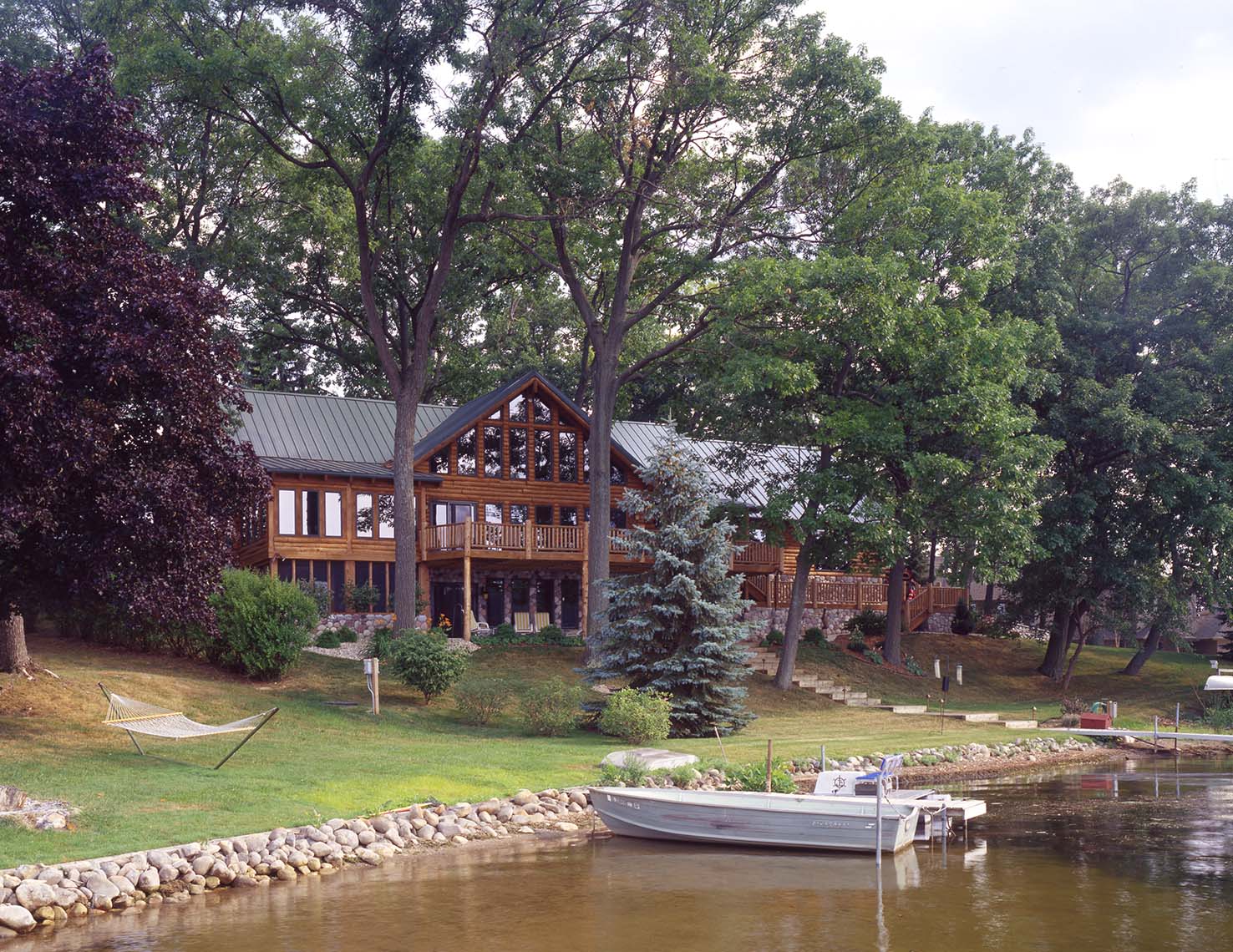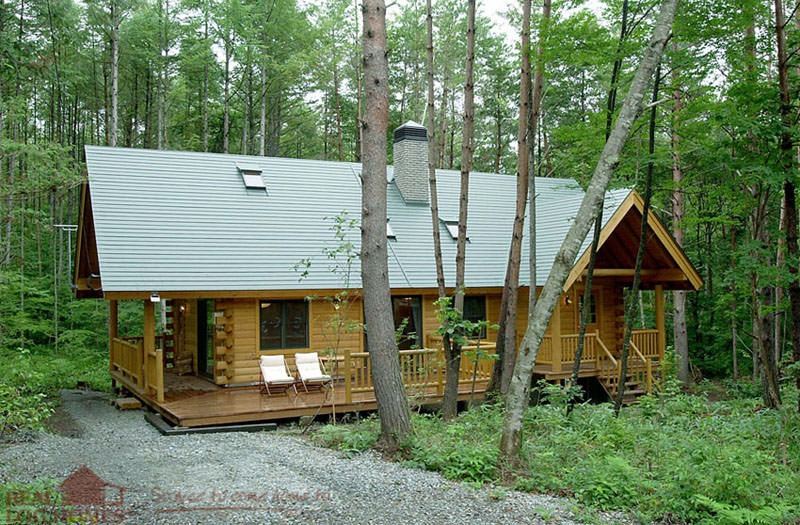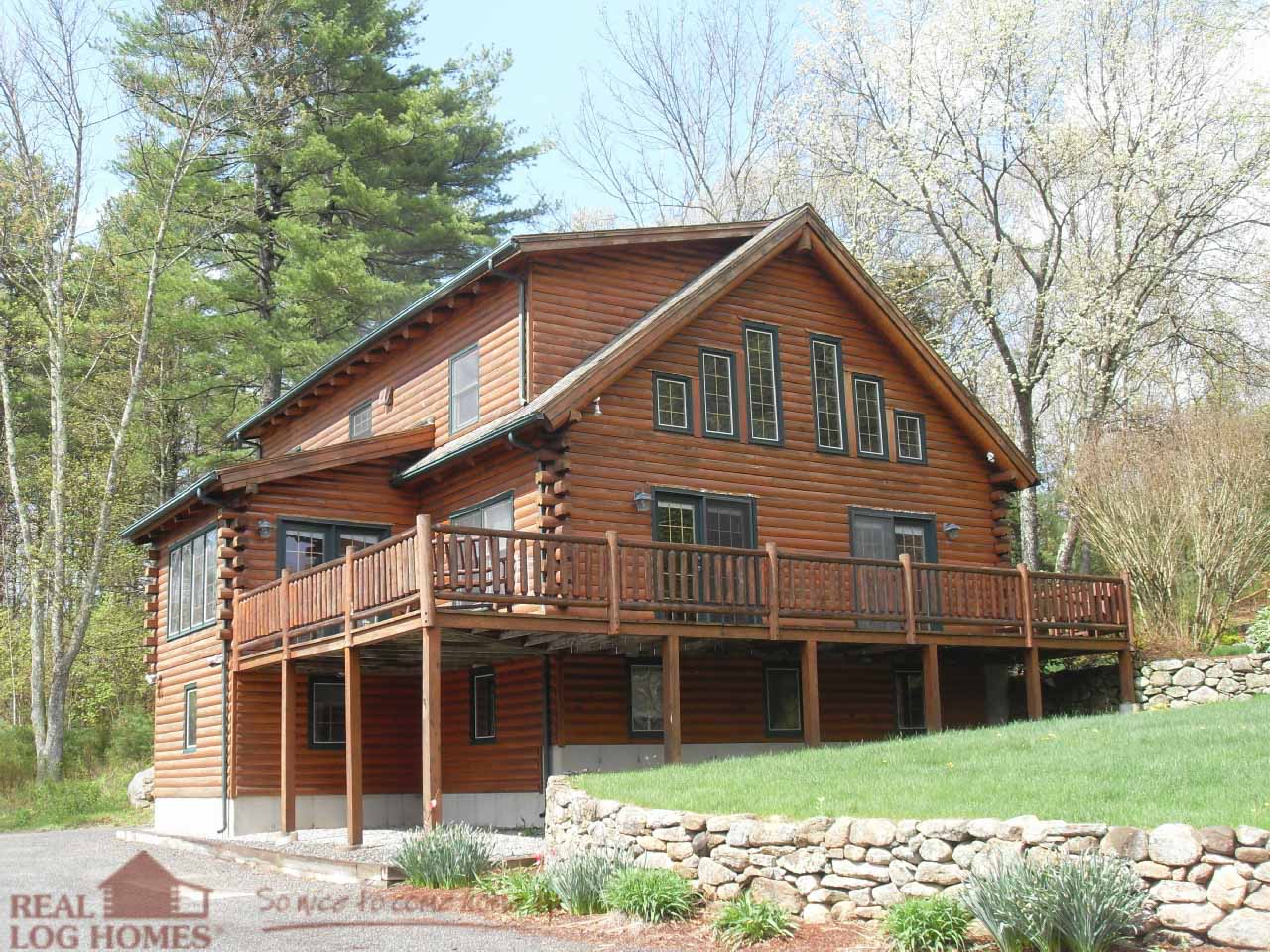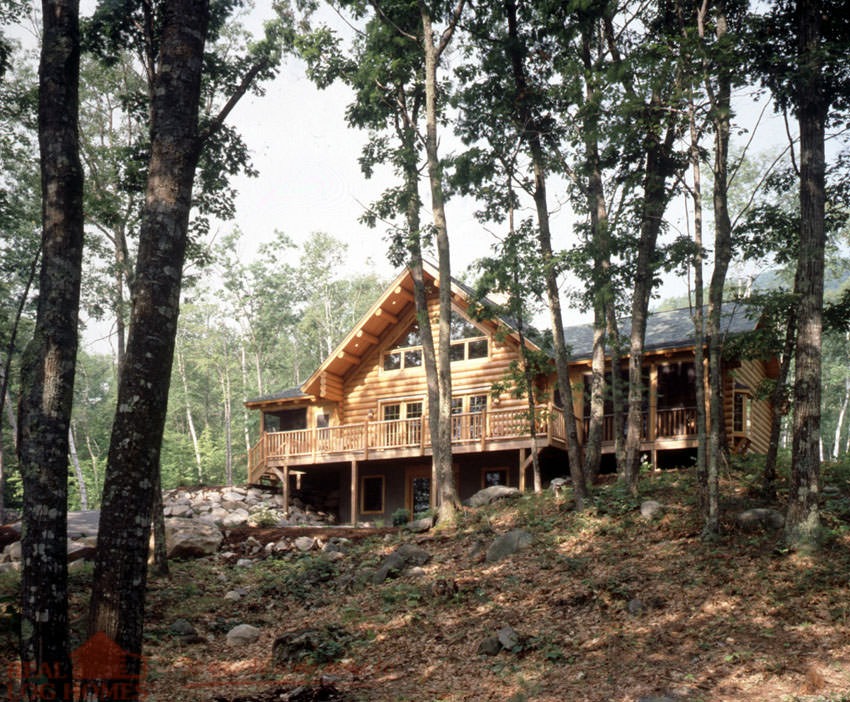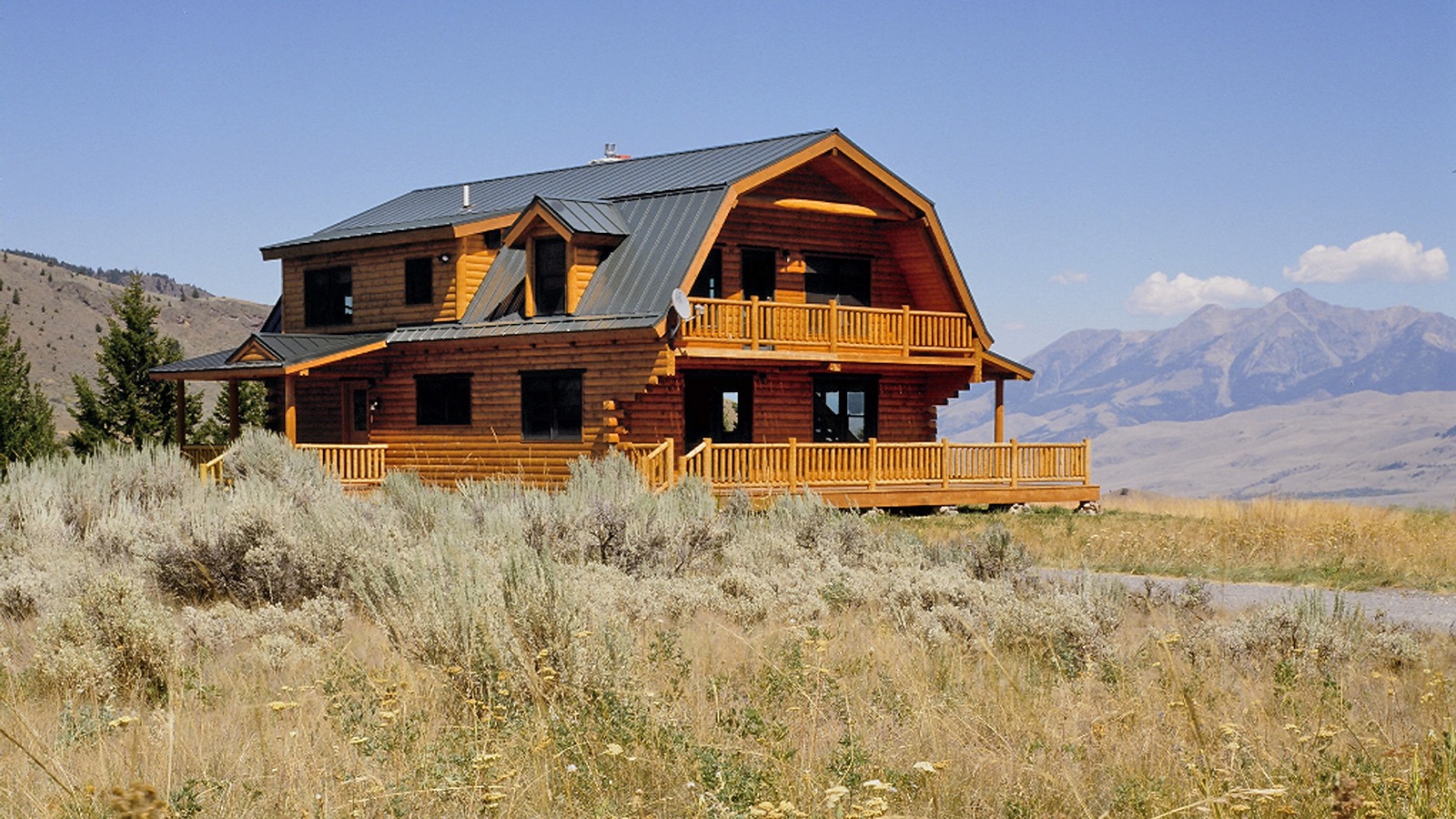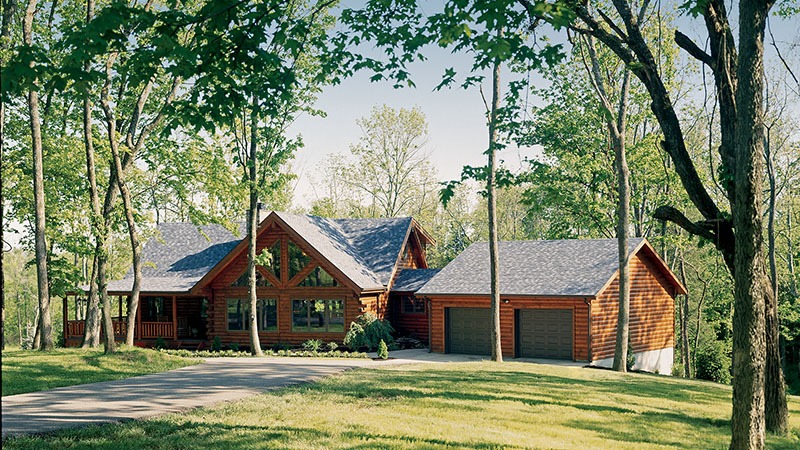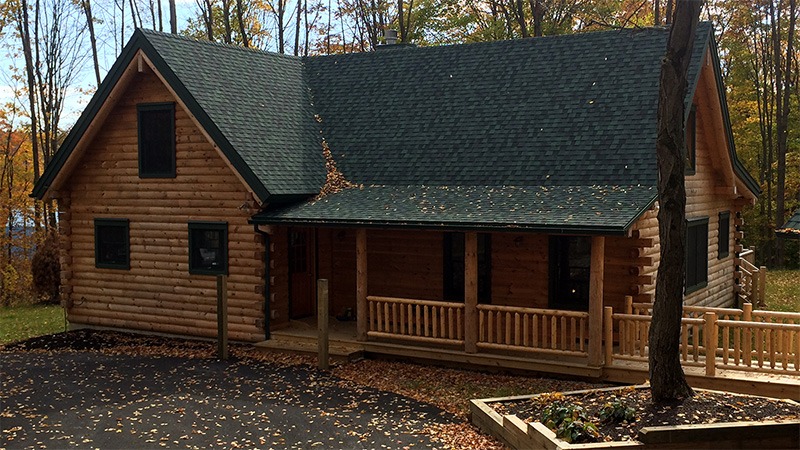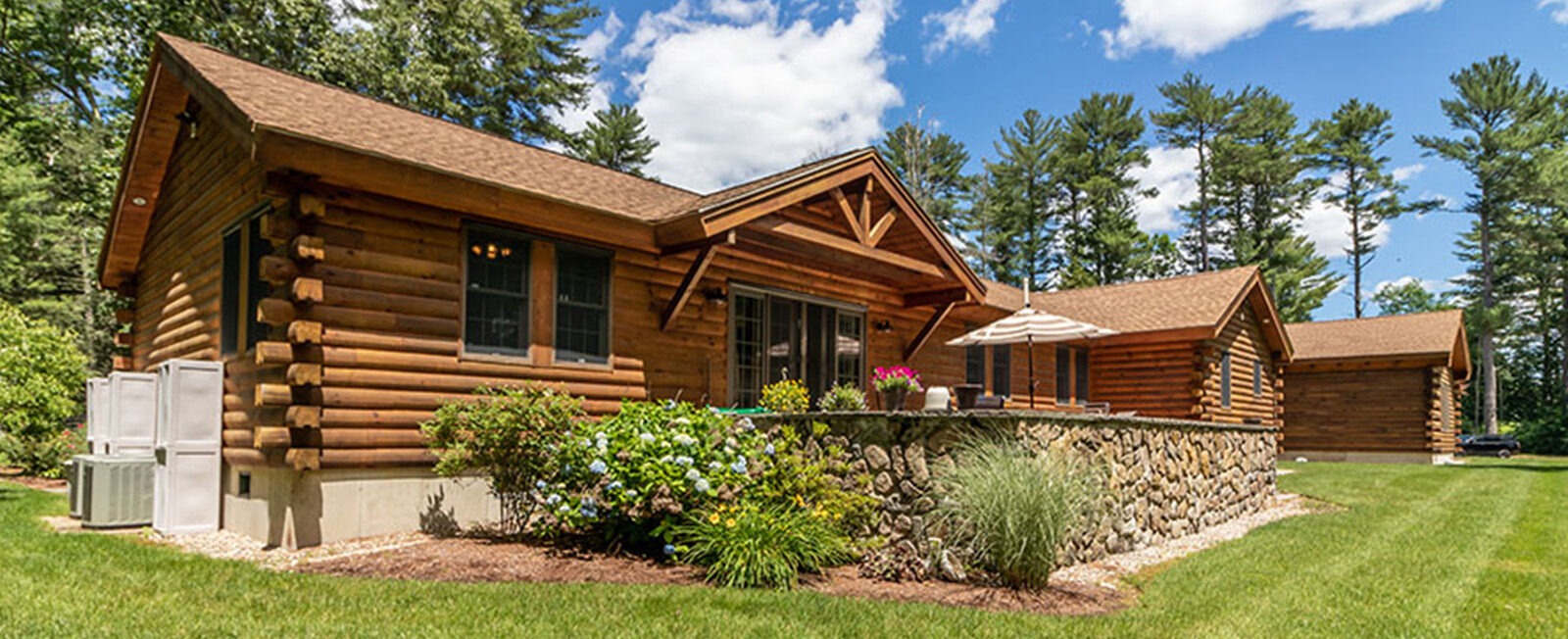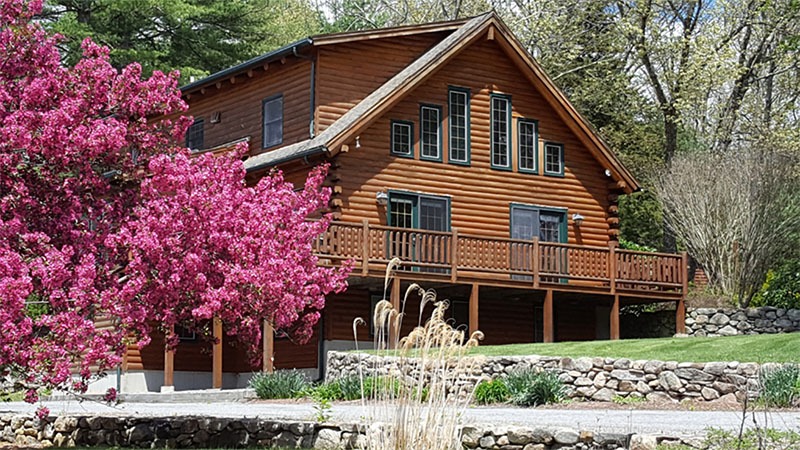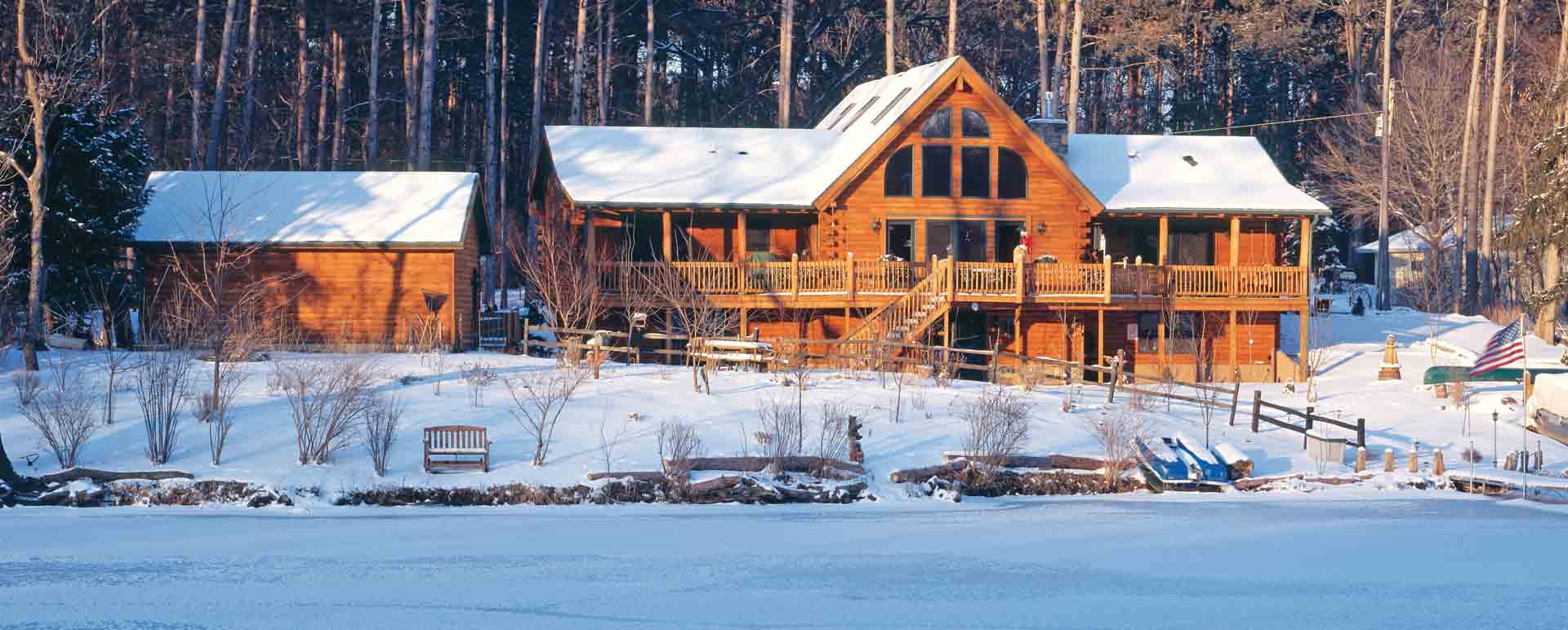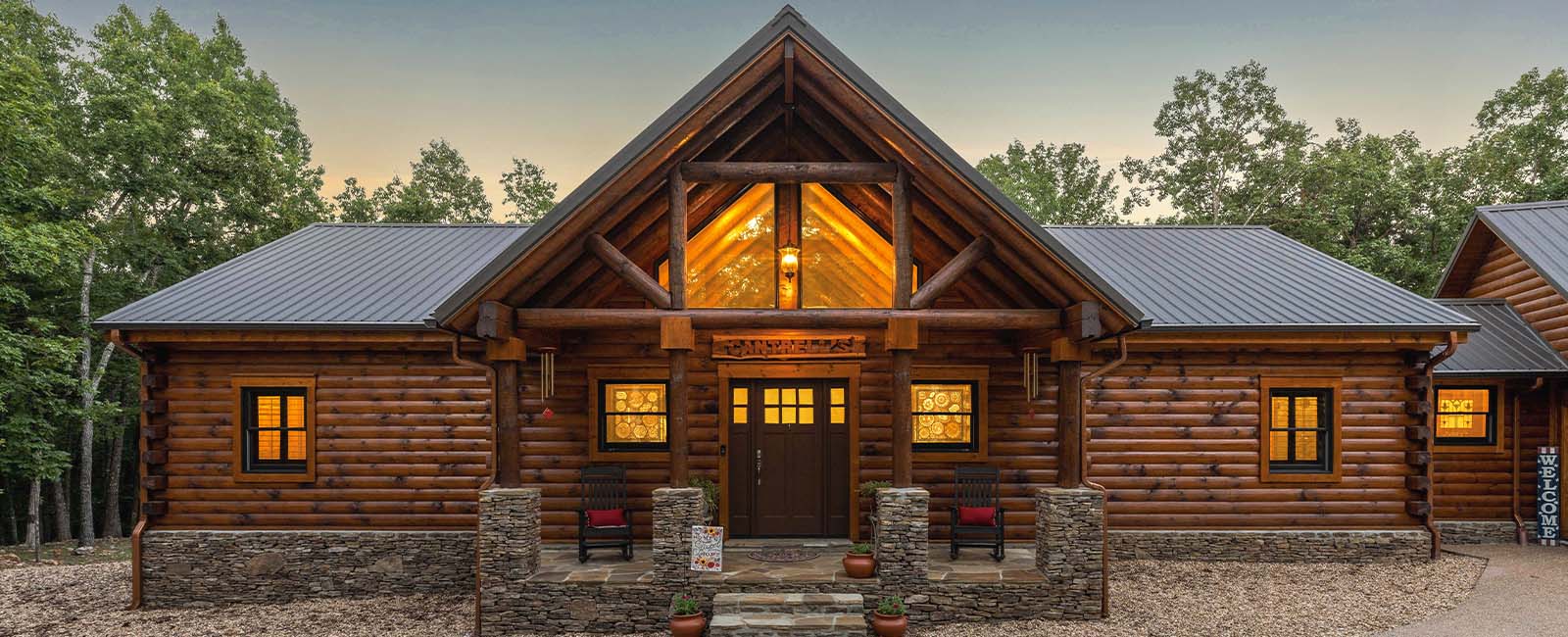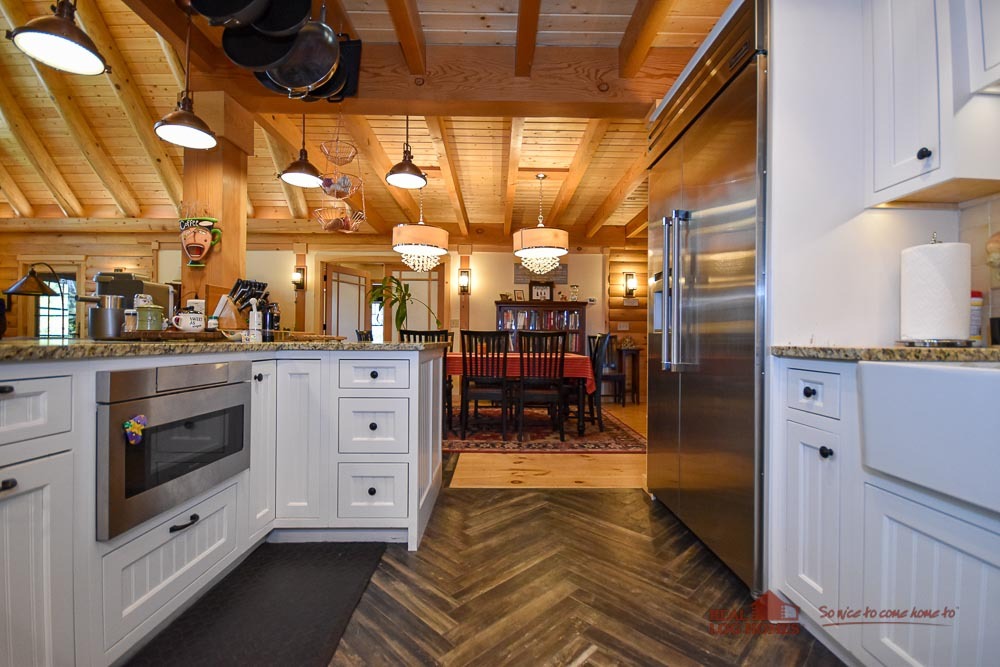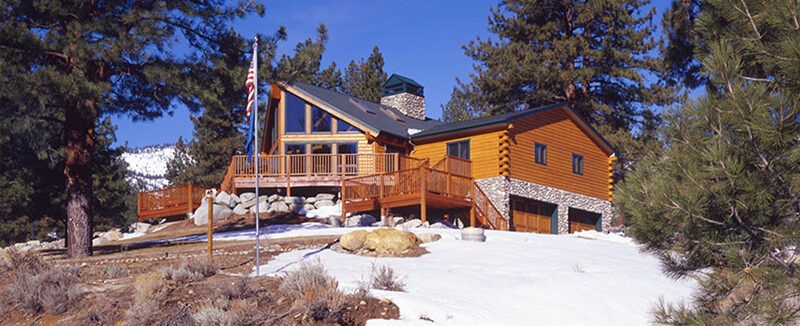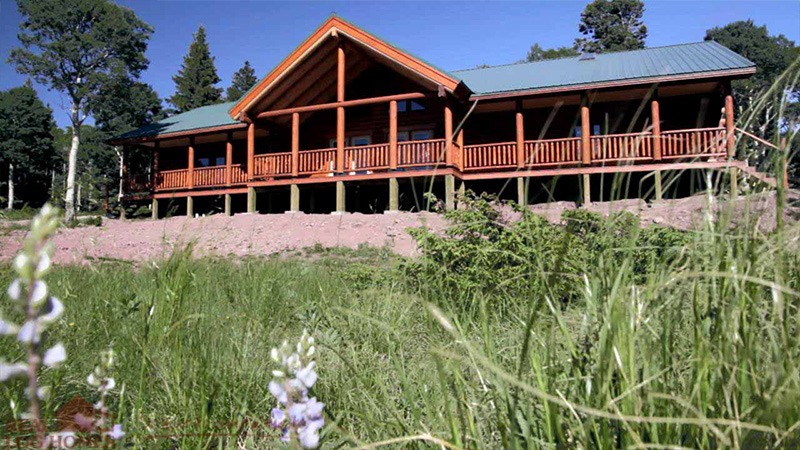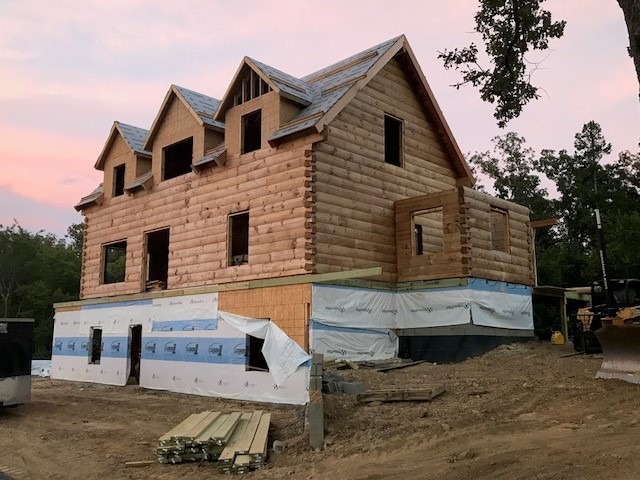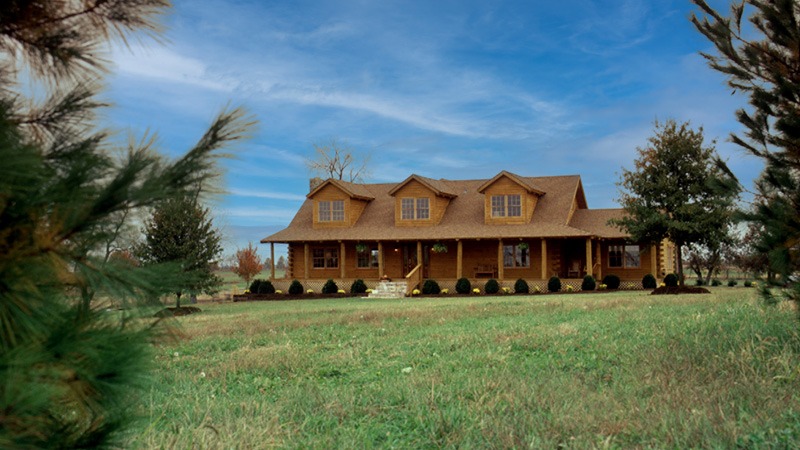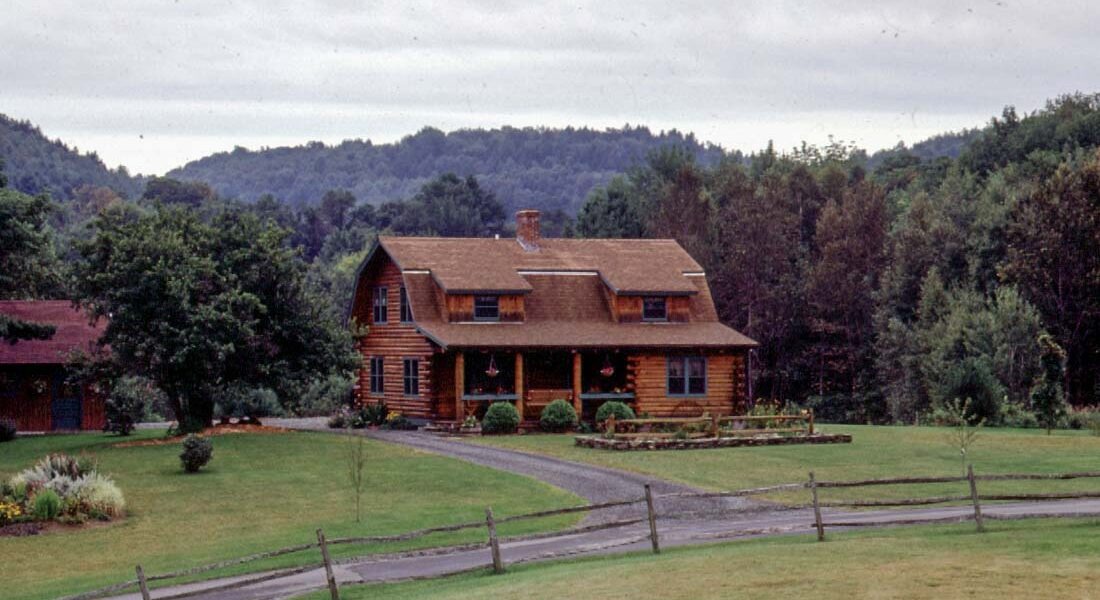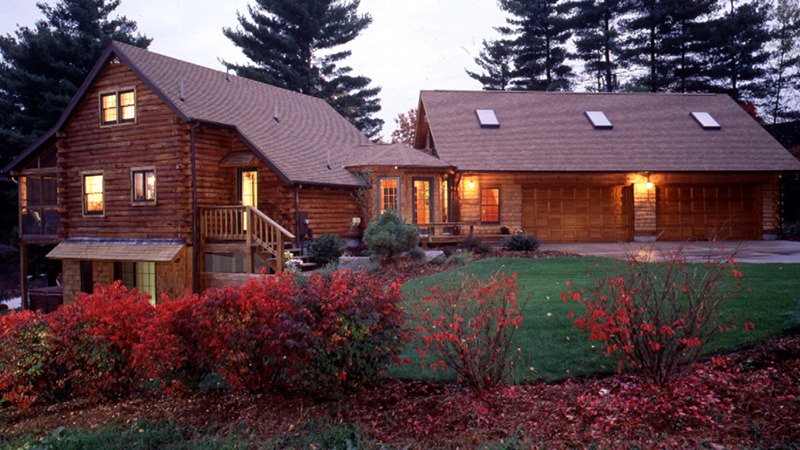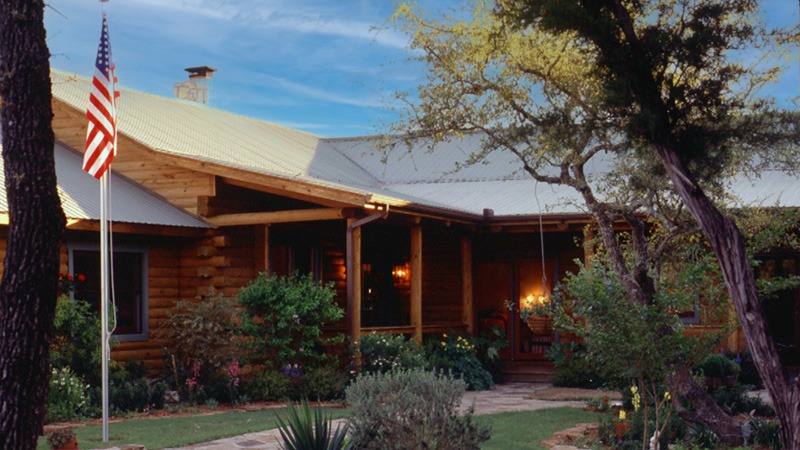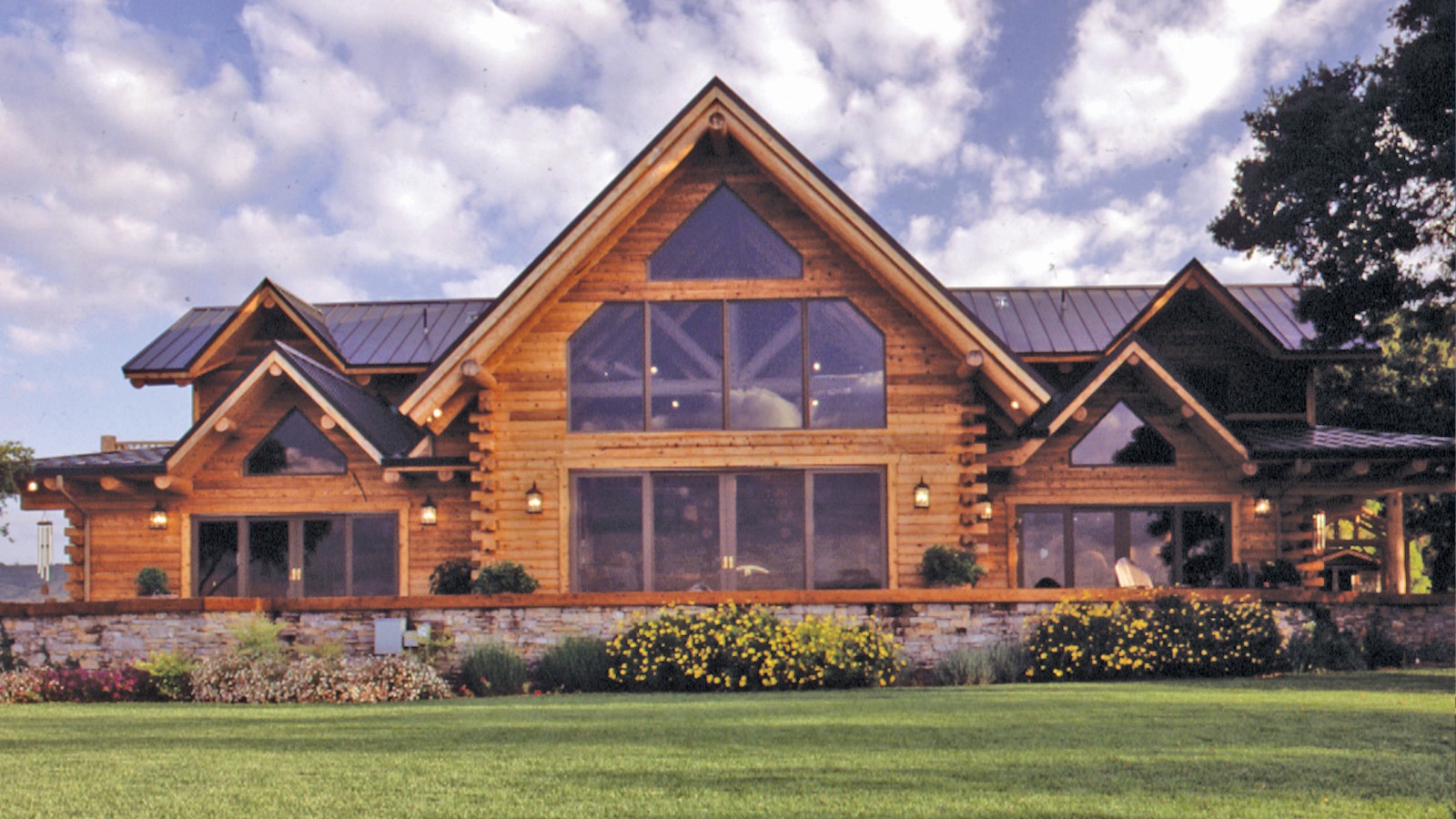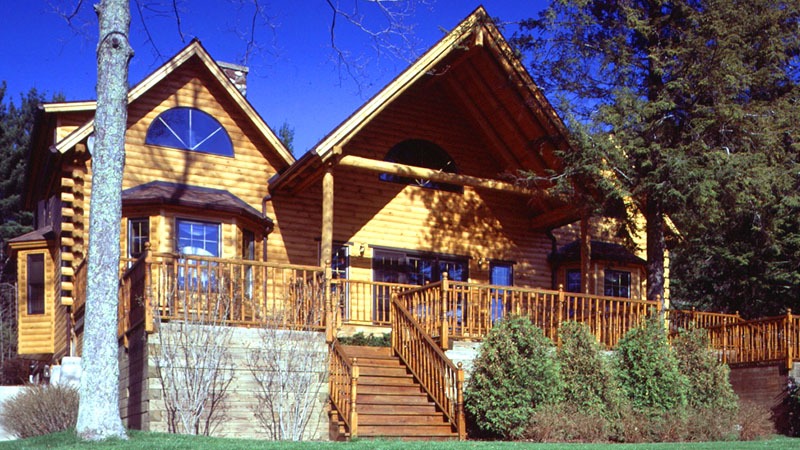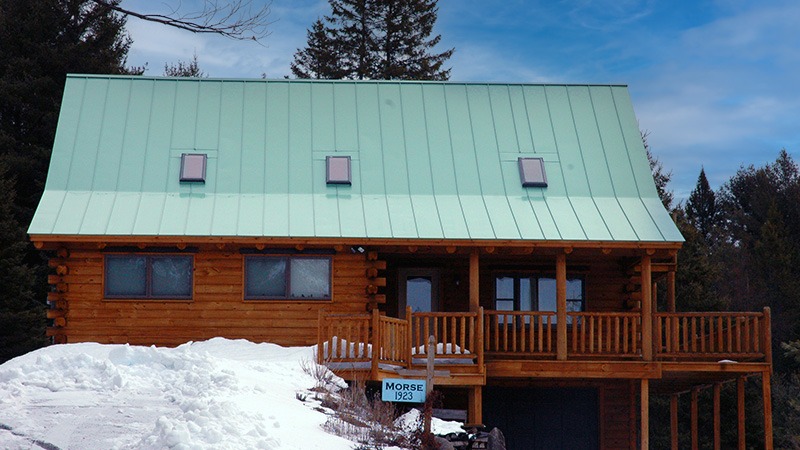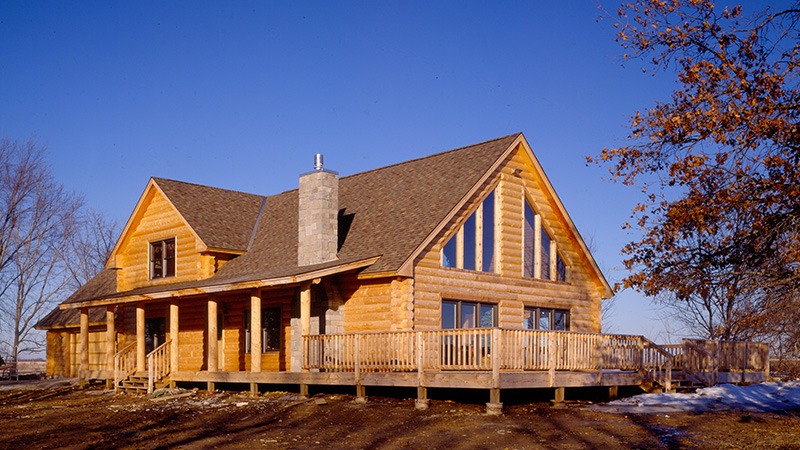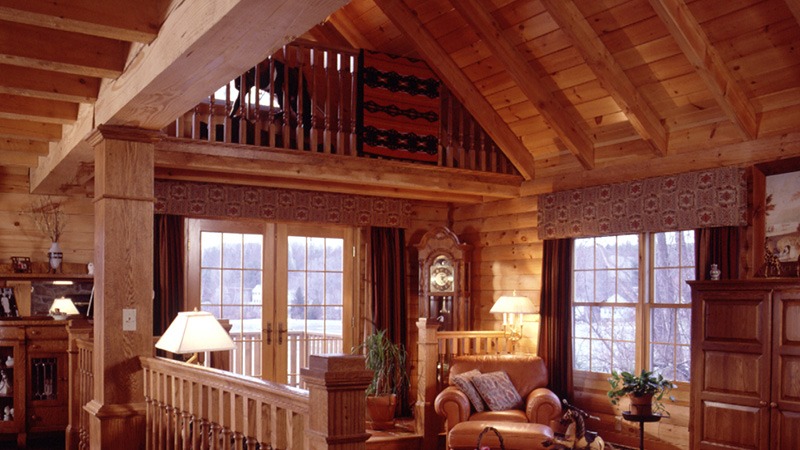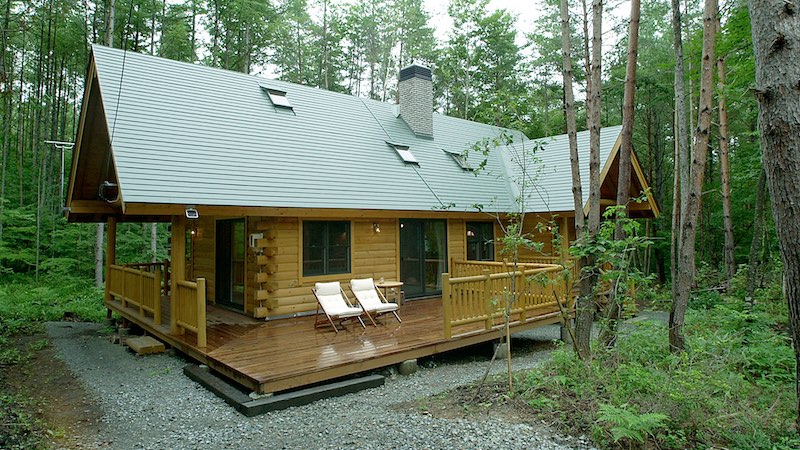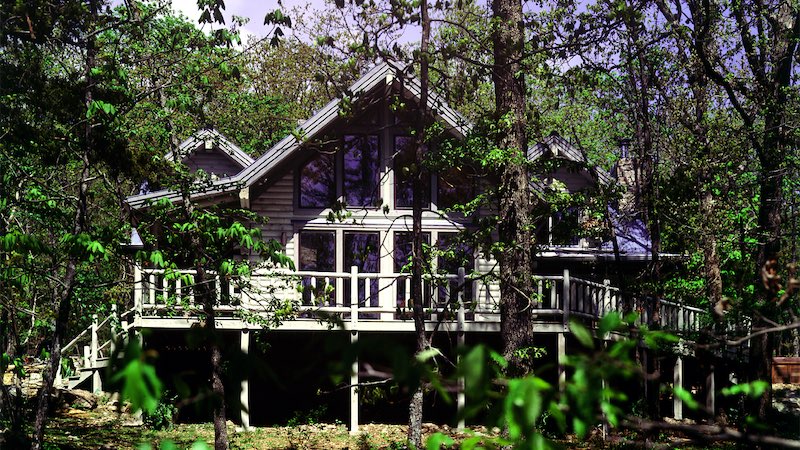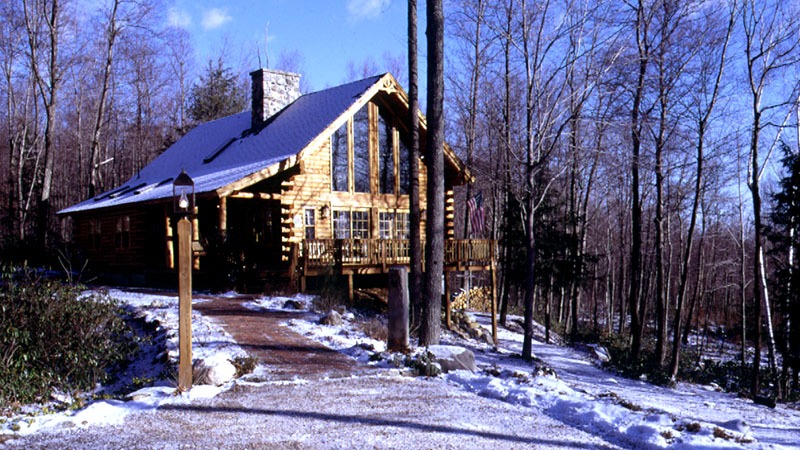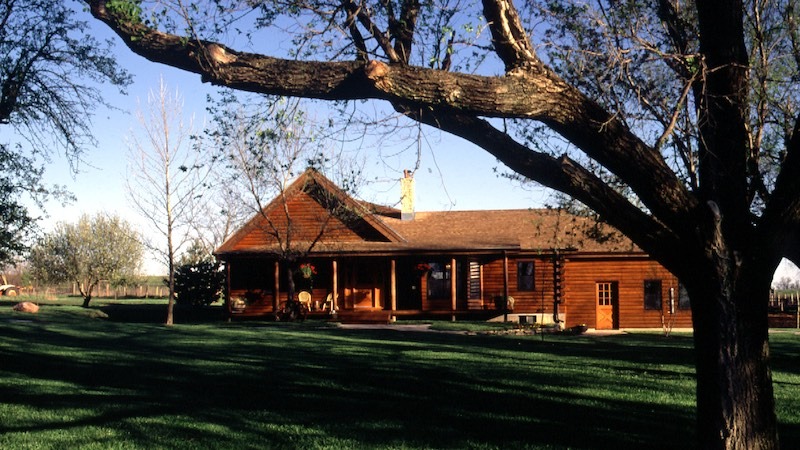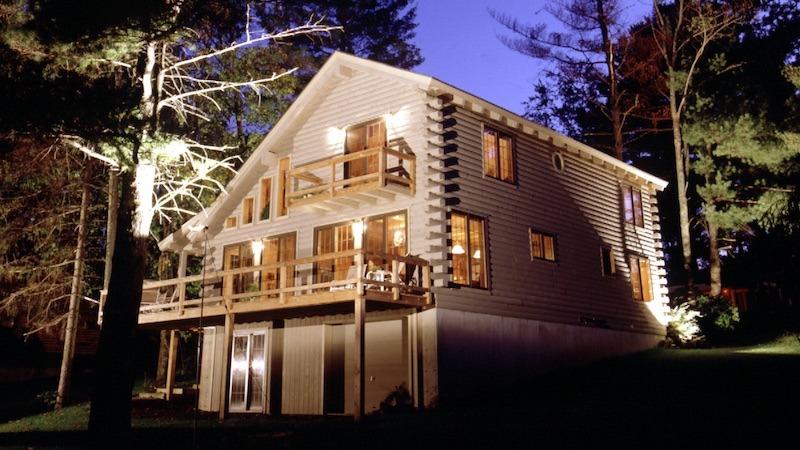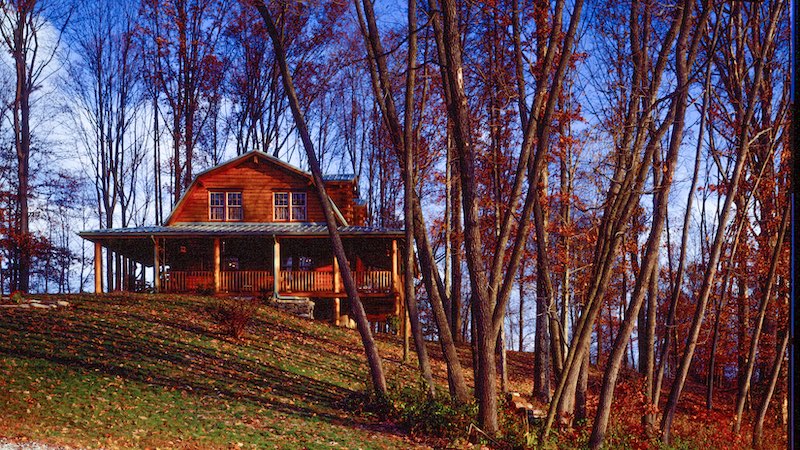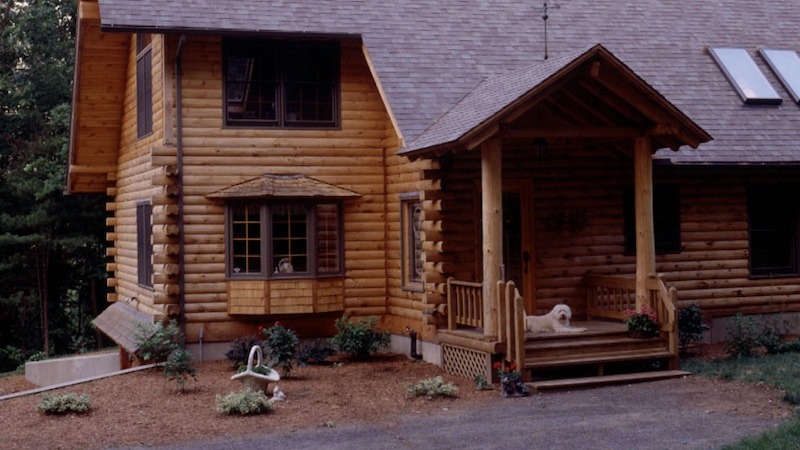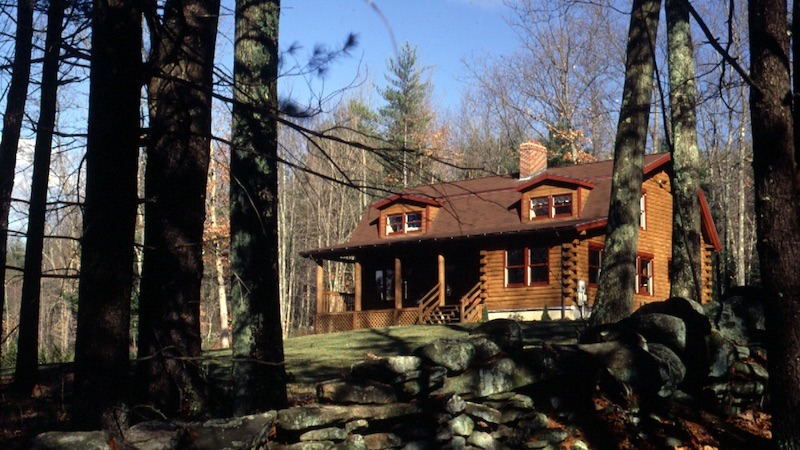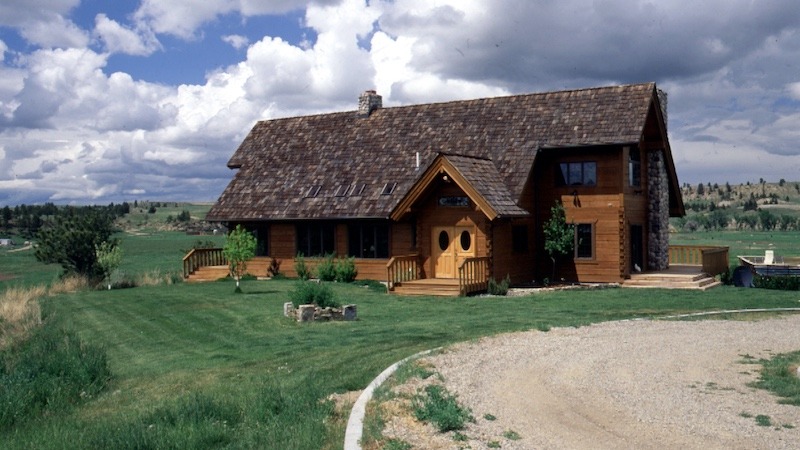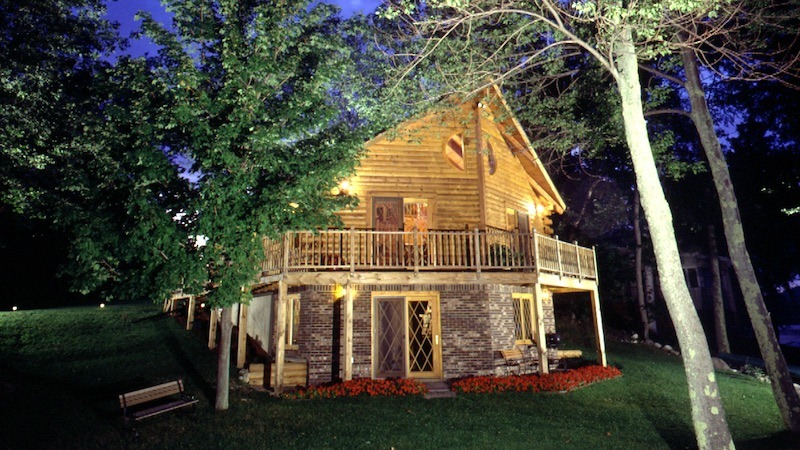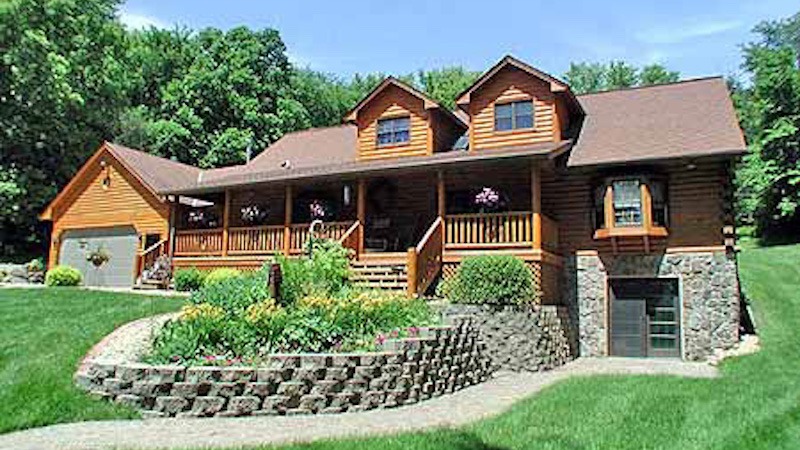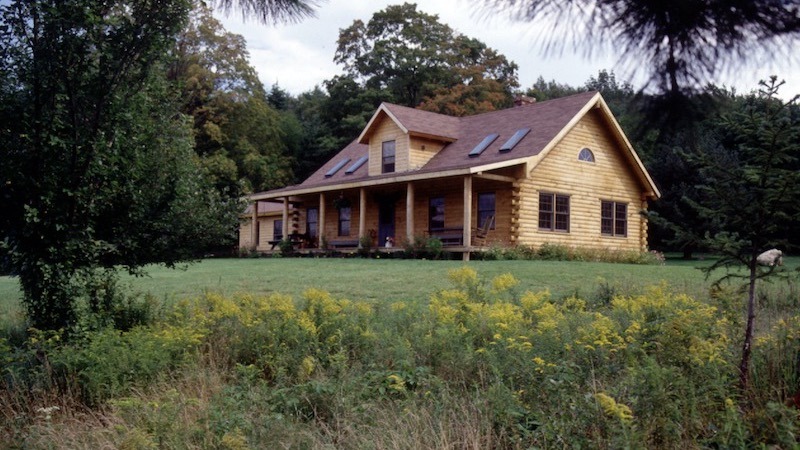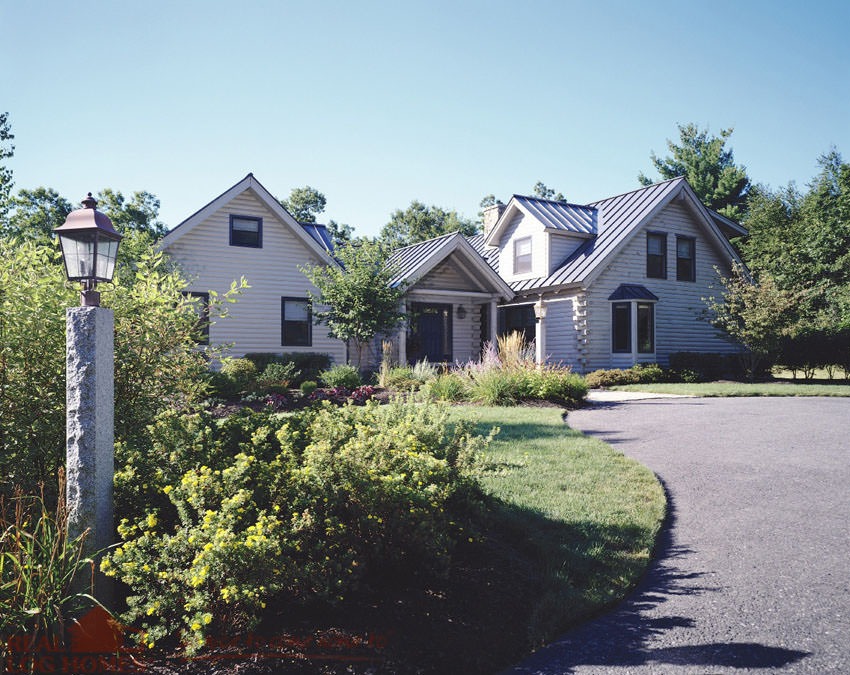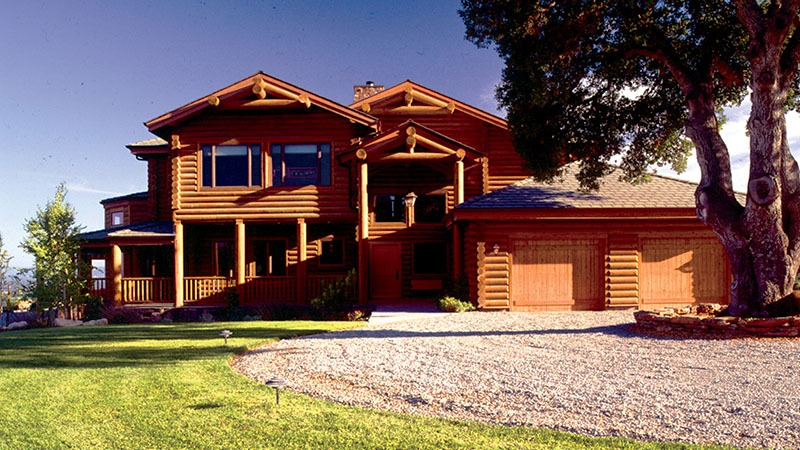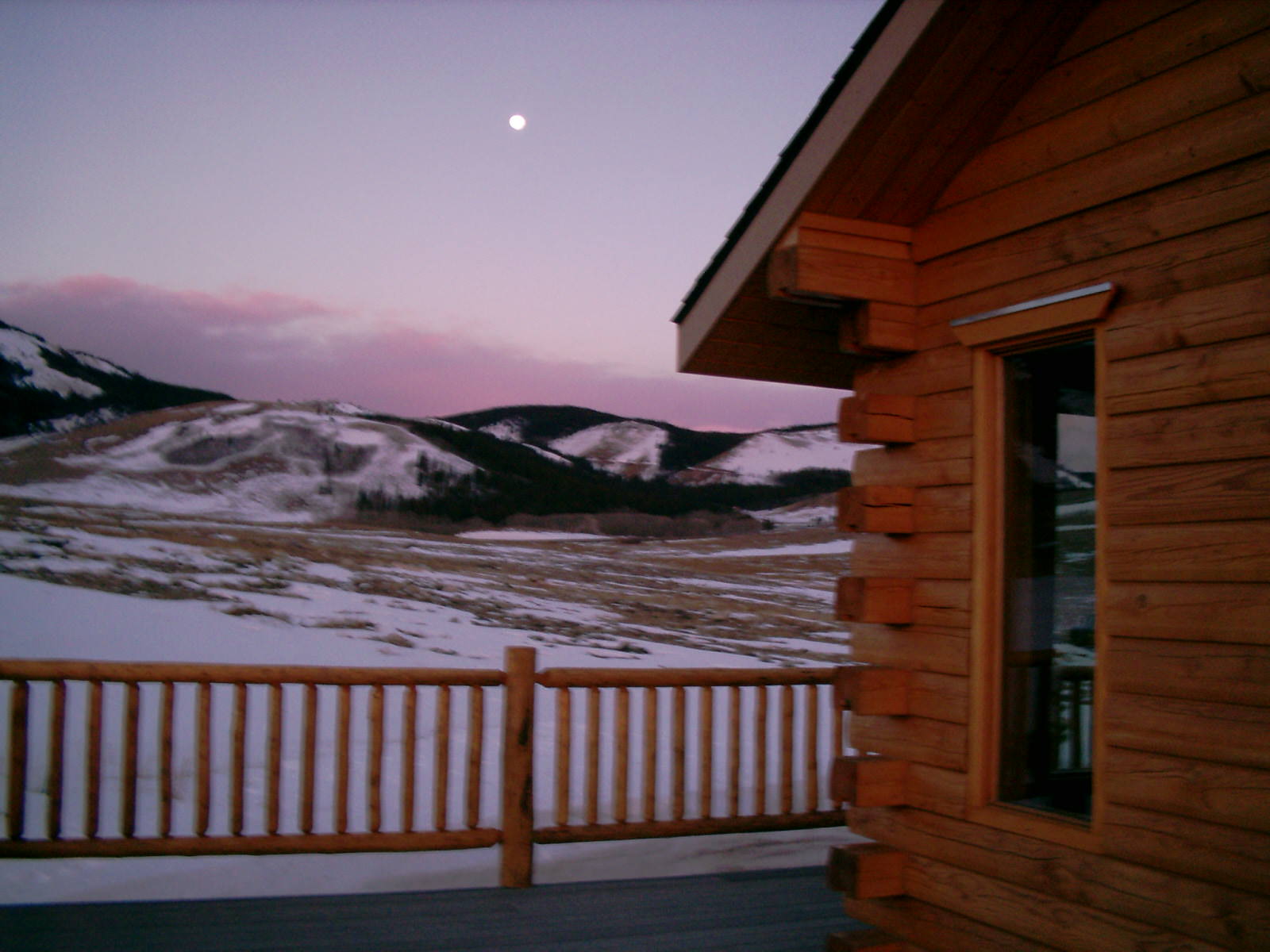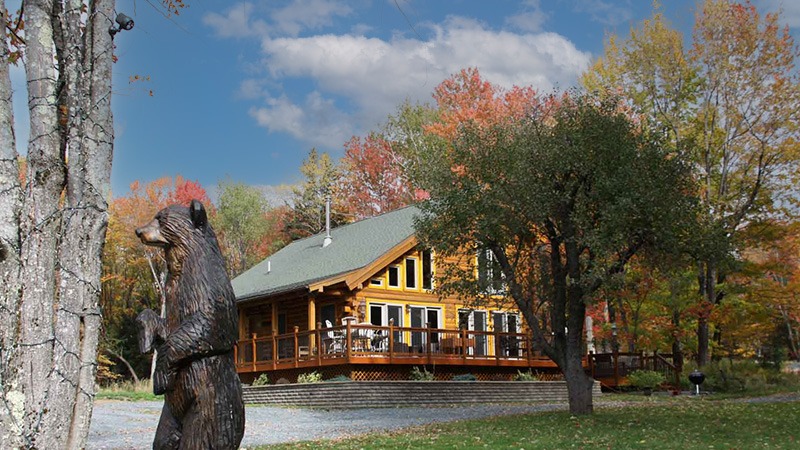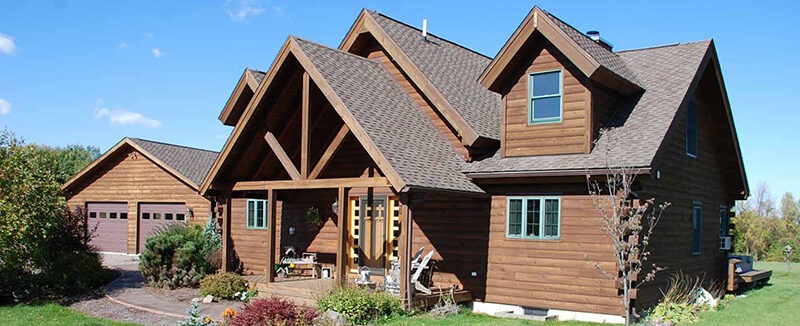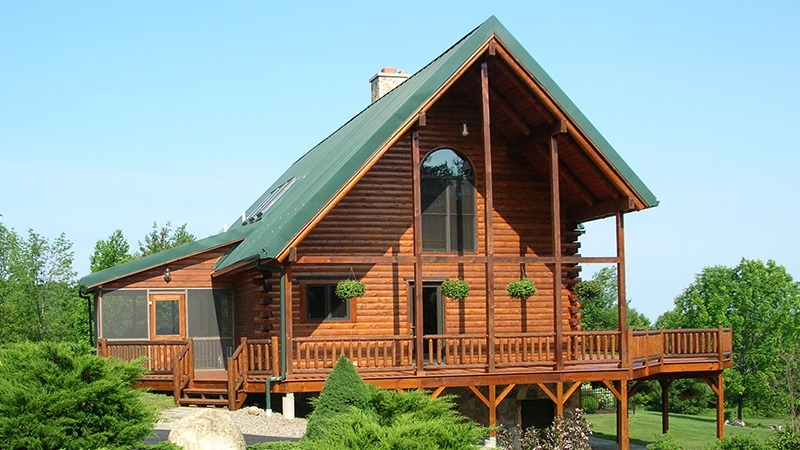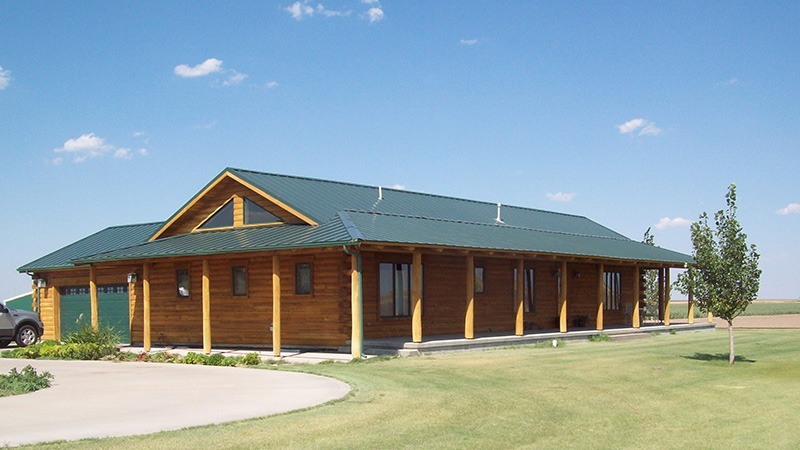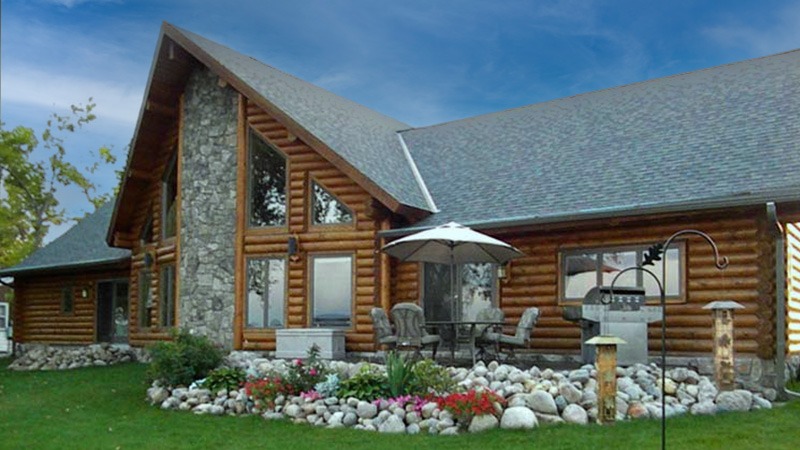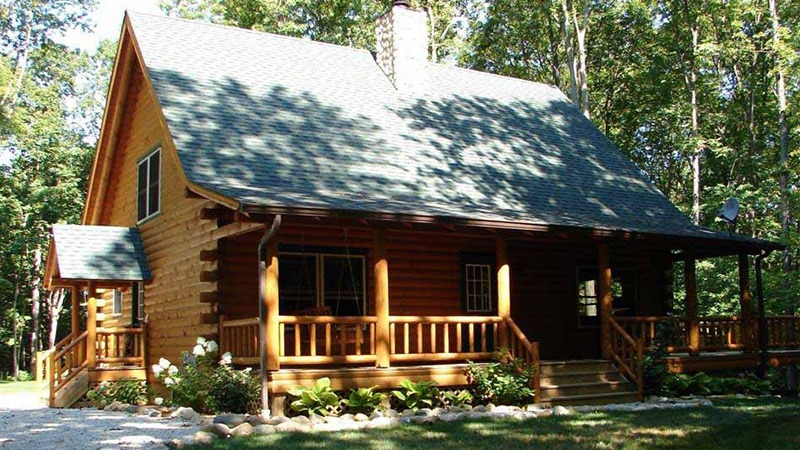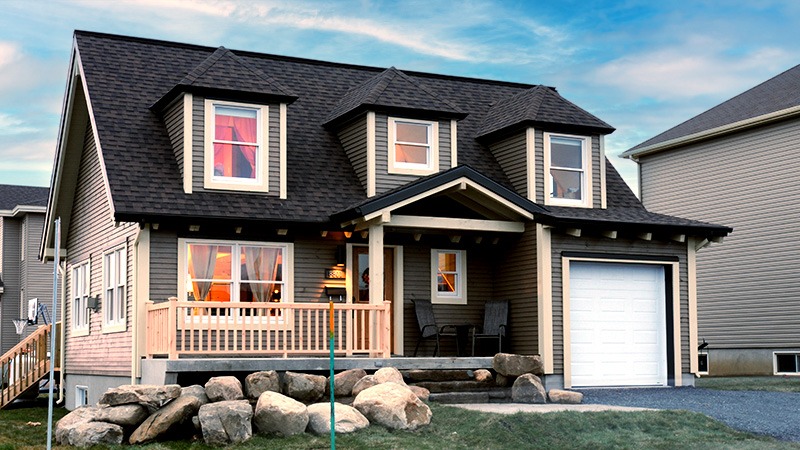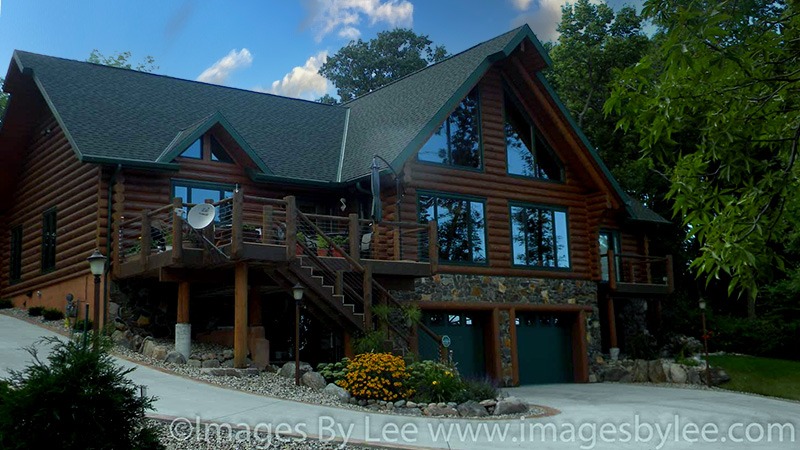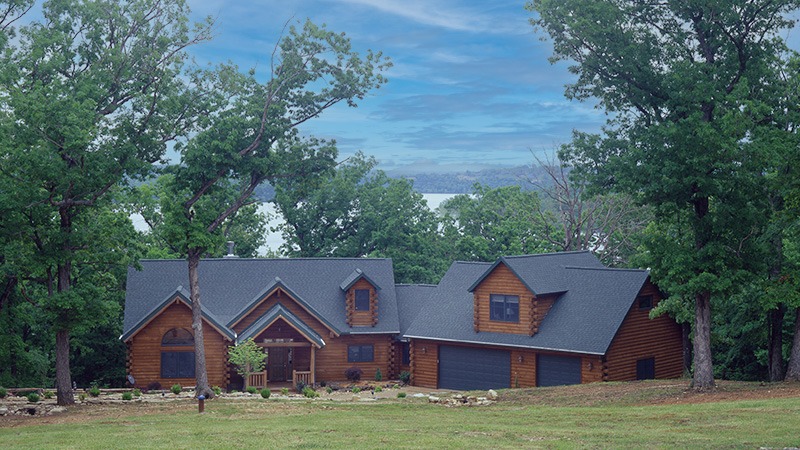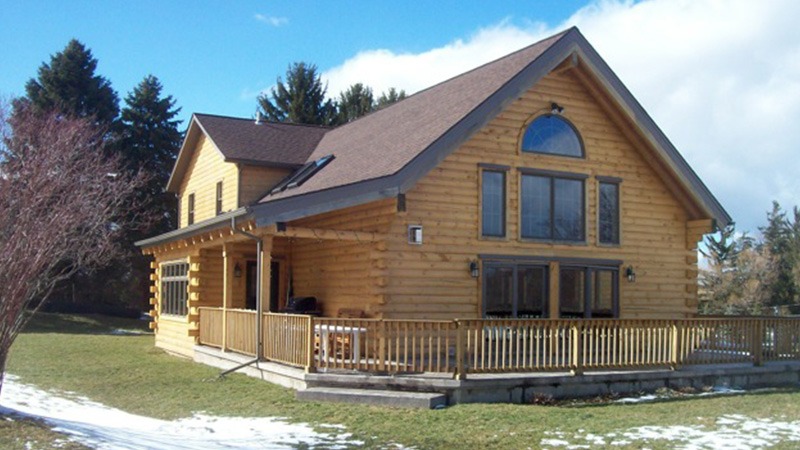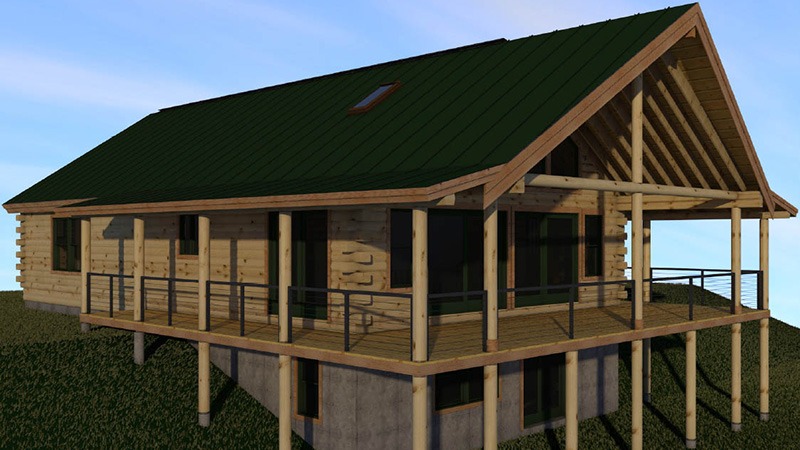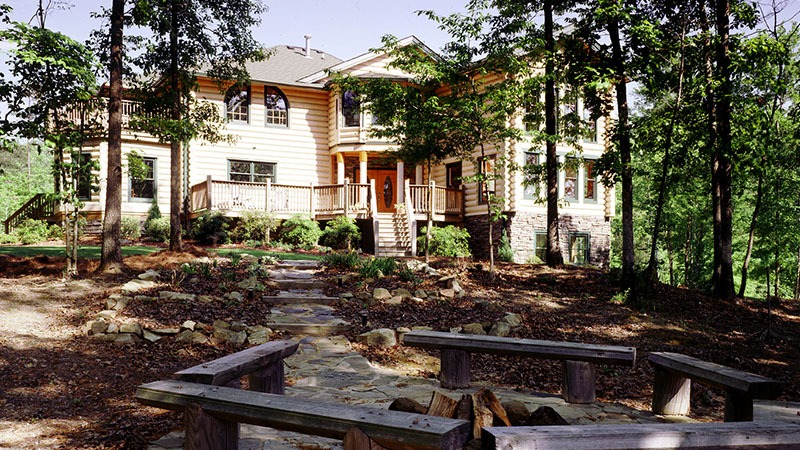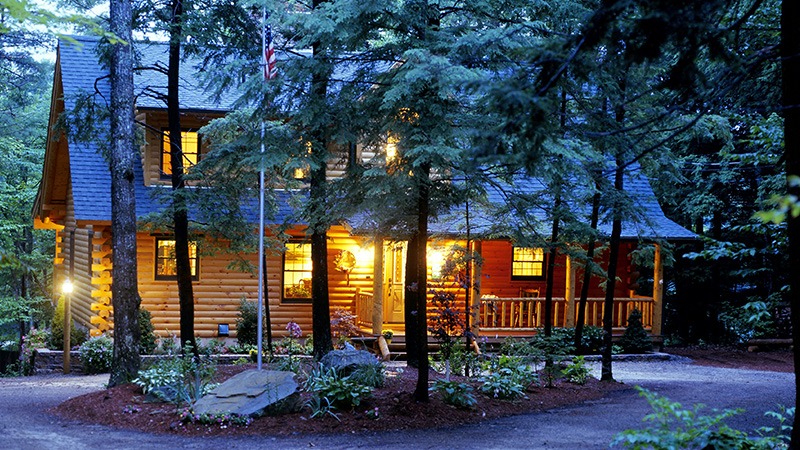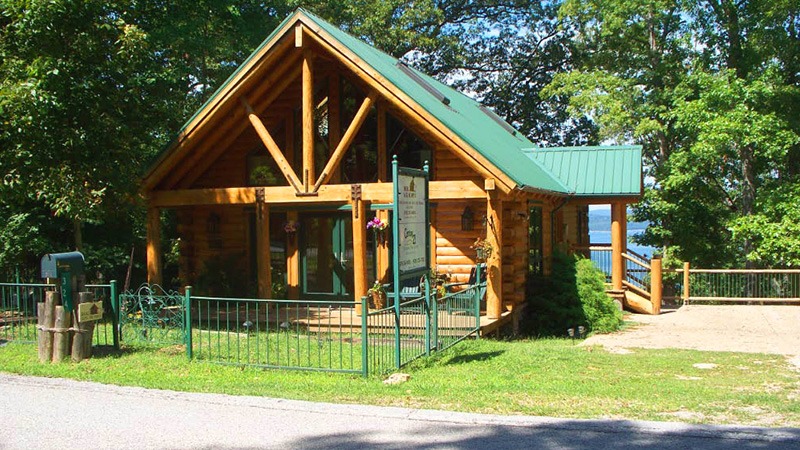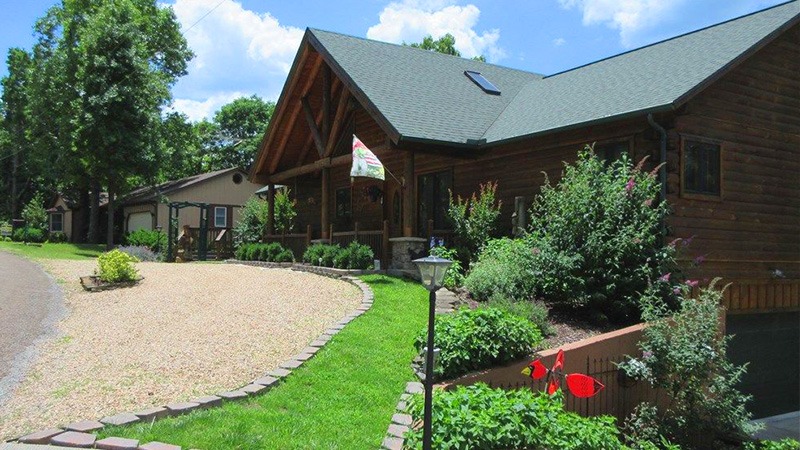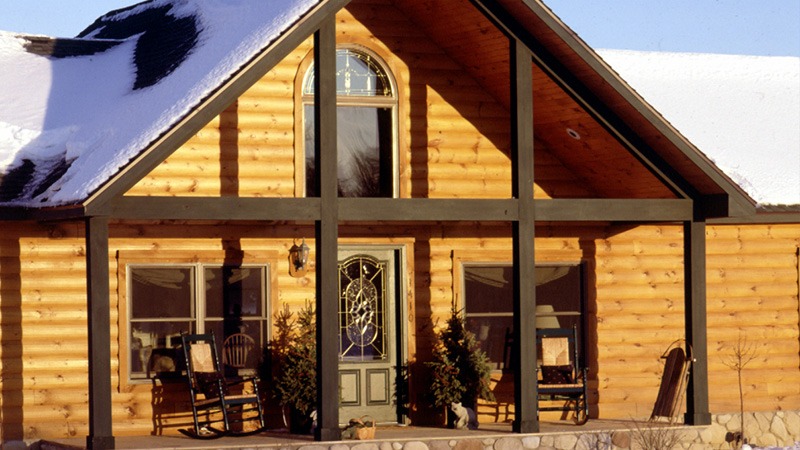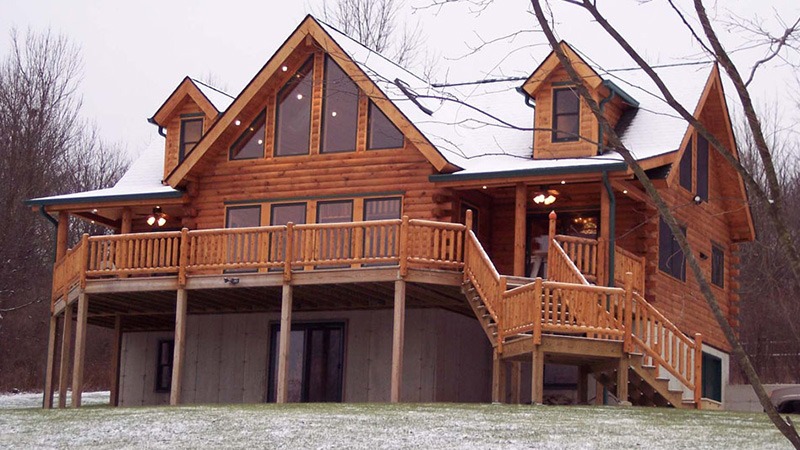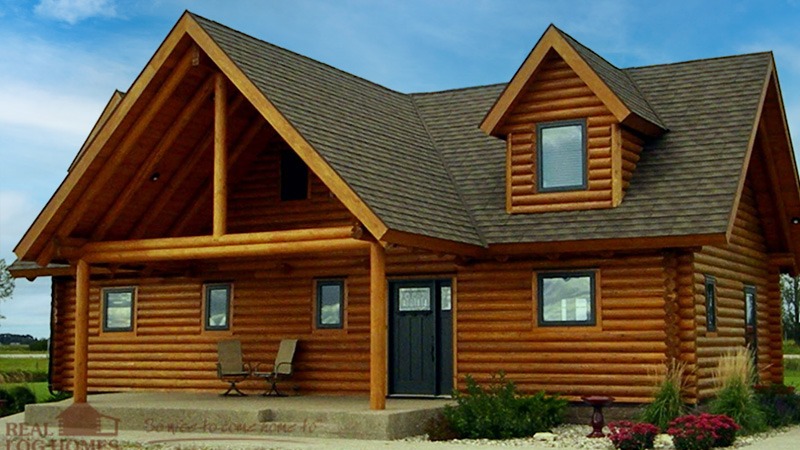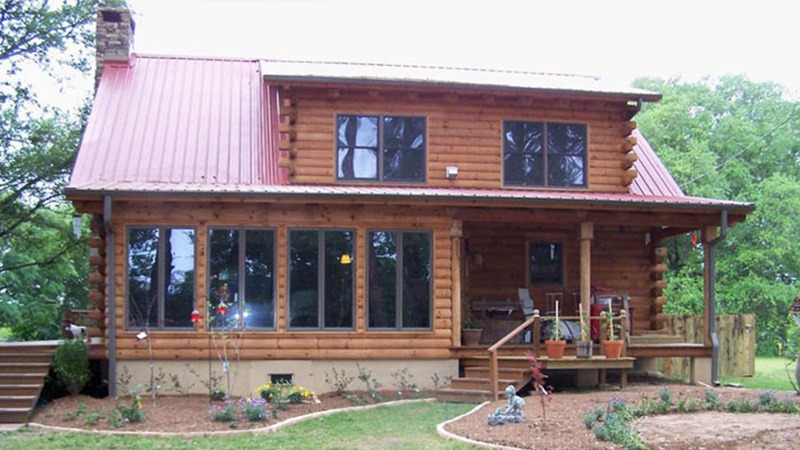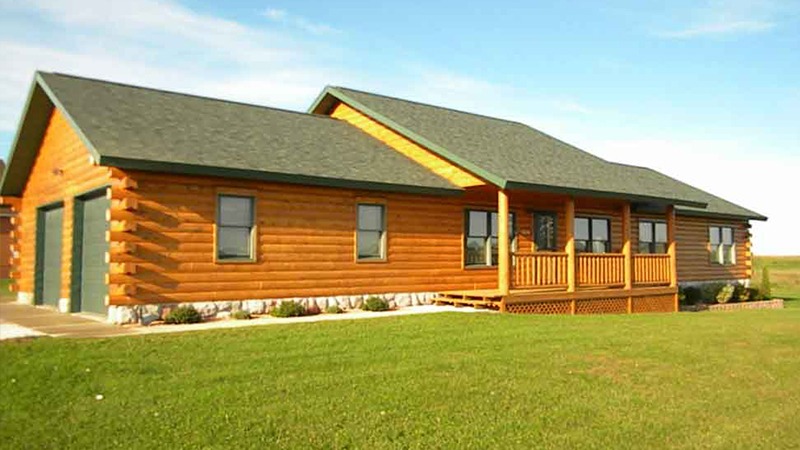Real Log Homes prides itself on creating durable and aesthetically pleasing log homes that keep you safe from the elements. However, there are several steps you should take with any home to maintain it as a safe environment for you and your family. To keep your family safe through the years, here are a few safety tips.
Chimney Cleaning
Everyone loves the sights and sounds of a fire in a fireplace or woodstove, as well as the wonderful radiant heat a fire produces. Over time, however, fires will cause a layer of creosote to build on your chimney walls. While a hot fire with plenty of oxygen will have minimal creosote buildup, over time a layer will form in any case. When a layer of creosote thicker than an eighth of an inch builds up, it is possible for the creosote to burn and cause a chimney fire. If you use your fireplace or woodstove infrequently you may be able to go a few years between cleanings, but if the fire is used as a primary heating source then you should probably have the chimney cleaned each year. In fact, if you use a fireplace or woodstove, many home insurance policies will not cover your home’s damage from a fire if you cannot prove that you had a chimney cleaning in the past year. The fee for a chimney sweep (under $200) is far less than the cost of a chimney fire.
Smoke and Carbon Monoxide Detectors

All new construction will require smoke and carbon monoxide detectors, and placement will vary depending on local codes. Most commonly, smoke and carbon monoxide detectors must be installed near or in each bedroom, and at least one smoke detector must be installed on all other floors of the house. Even if local codes do not require it, consider installing interconnected alarms that will sound at each station if any detector triggers an alarm. This makes awakening much easier in the event of a fire far from the sleeping area of the house. Alarms should not be installed in kitchens or near furnaces to lower the chance of false alarms. In all cases, make sure to replace your batteries every year or even more frequently!
Radon Testing

We may not think of radon testing as being an urgent safety issue, but radon gas causes 29,000 lung cancer deaths per year and is the leading cause of lung cancer among non-smokers. It is especially important to test for radon if you have a basement that is commonly used (like this family room in the basement of a Real Log Home in Indiana) or has bedrooms. Send-away radon tests are inexpensive, at less than $20, and instant tests can also be performed if necessary. If high levels of radon are detected there are many ways to reduce the radon to safe levels, and the average cost of mitigation is around $1200.
We hope these tips help to keep your log home, and most importantly your family, safe and sound for many years to come. If you have any questions about building a new log home, please don’t hesitate to call Real Log Homes today or fill out the form below for more information.
.
